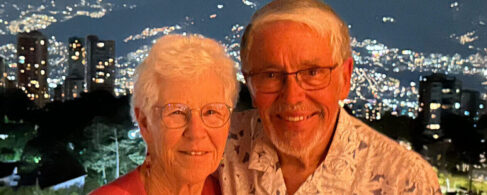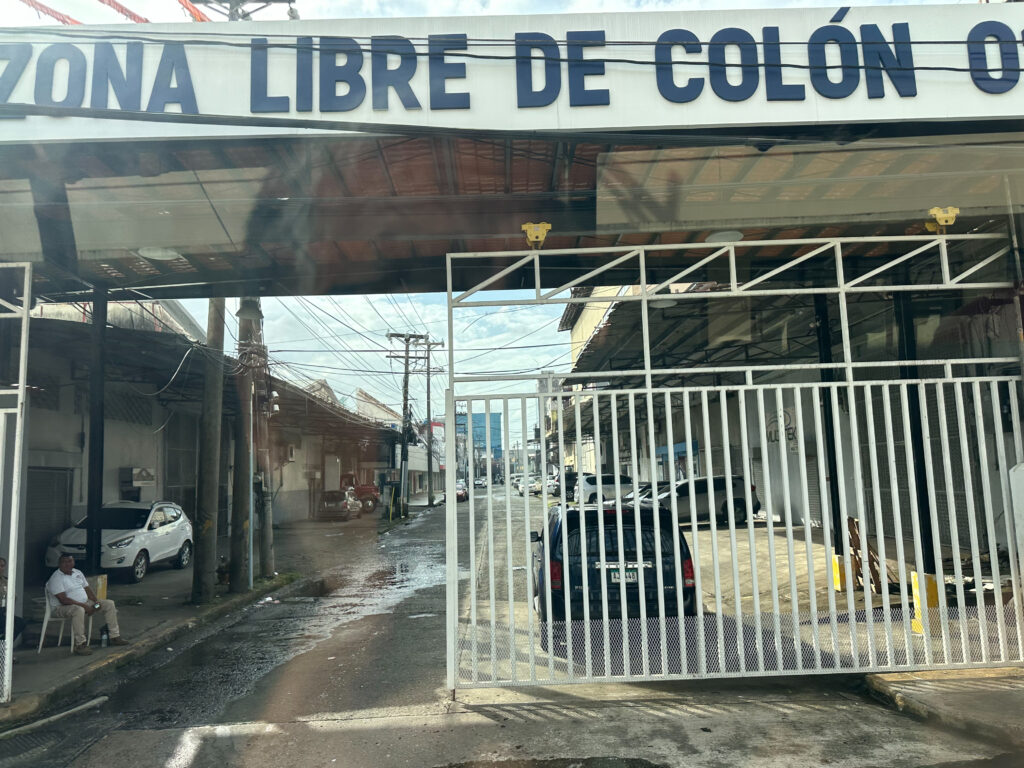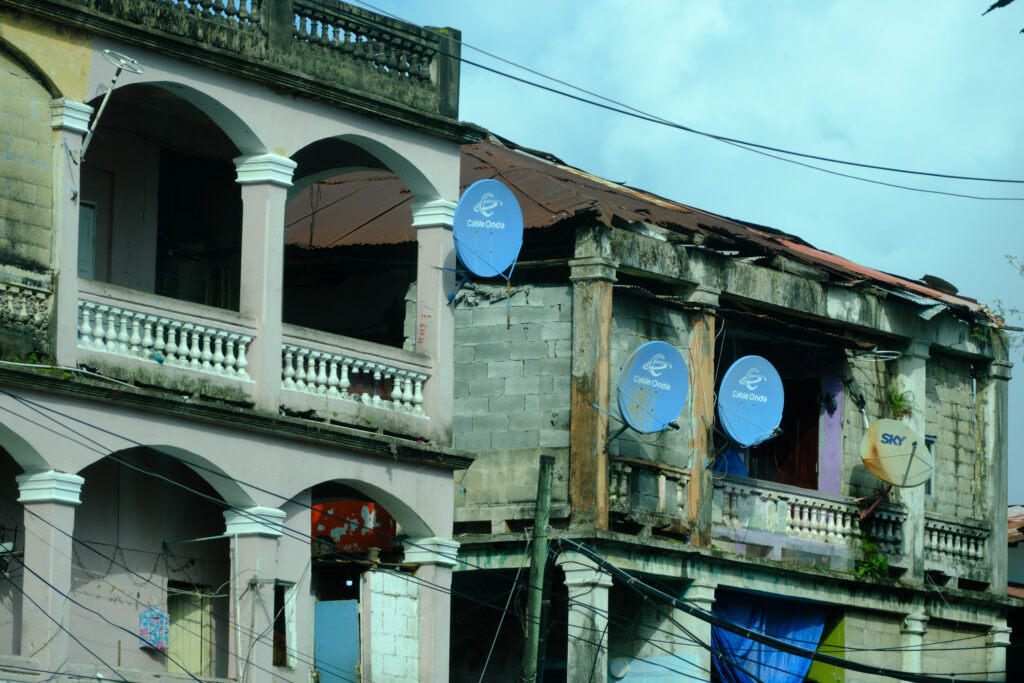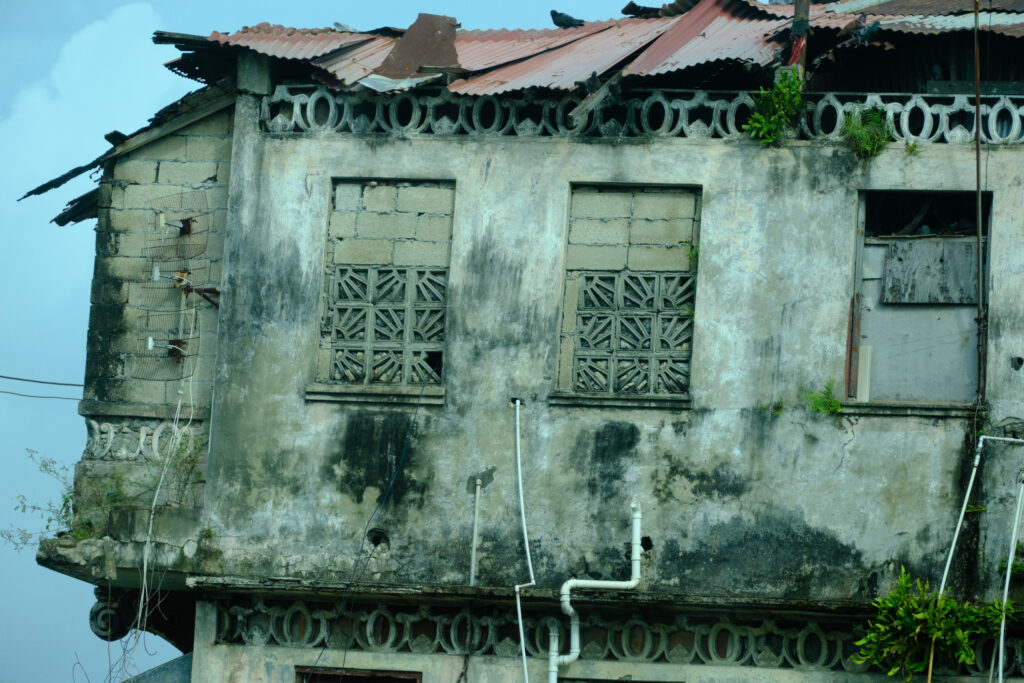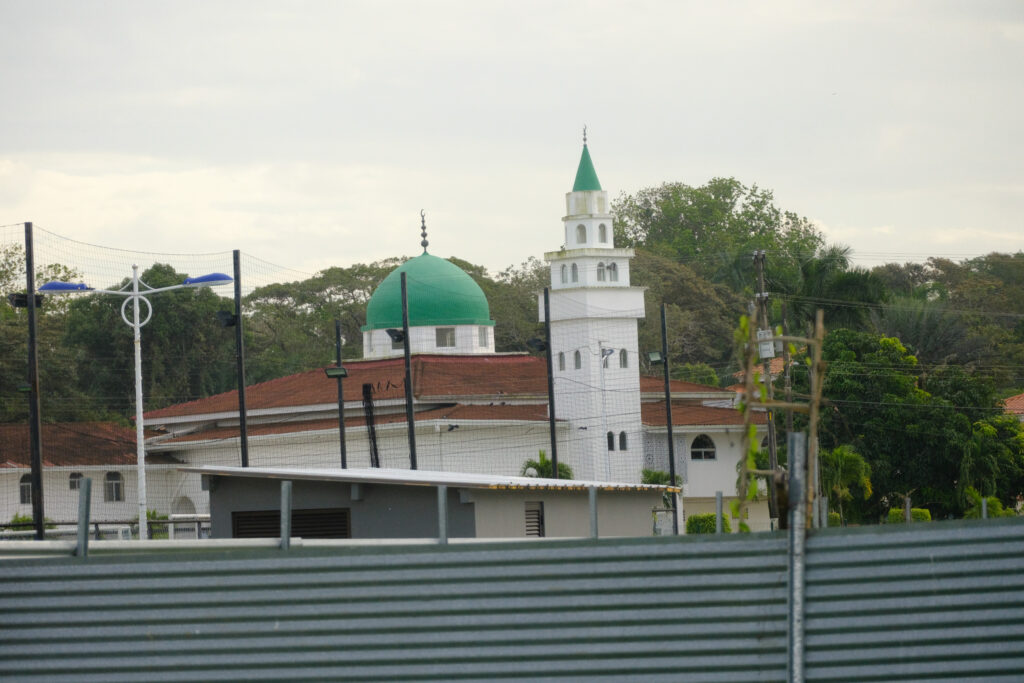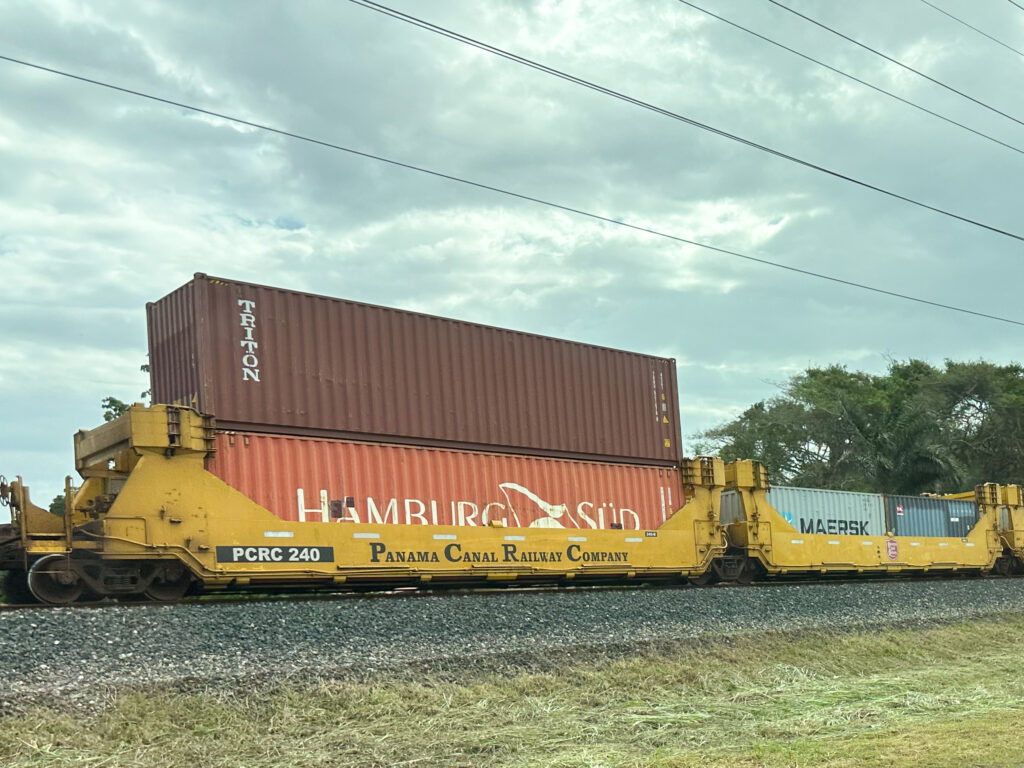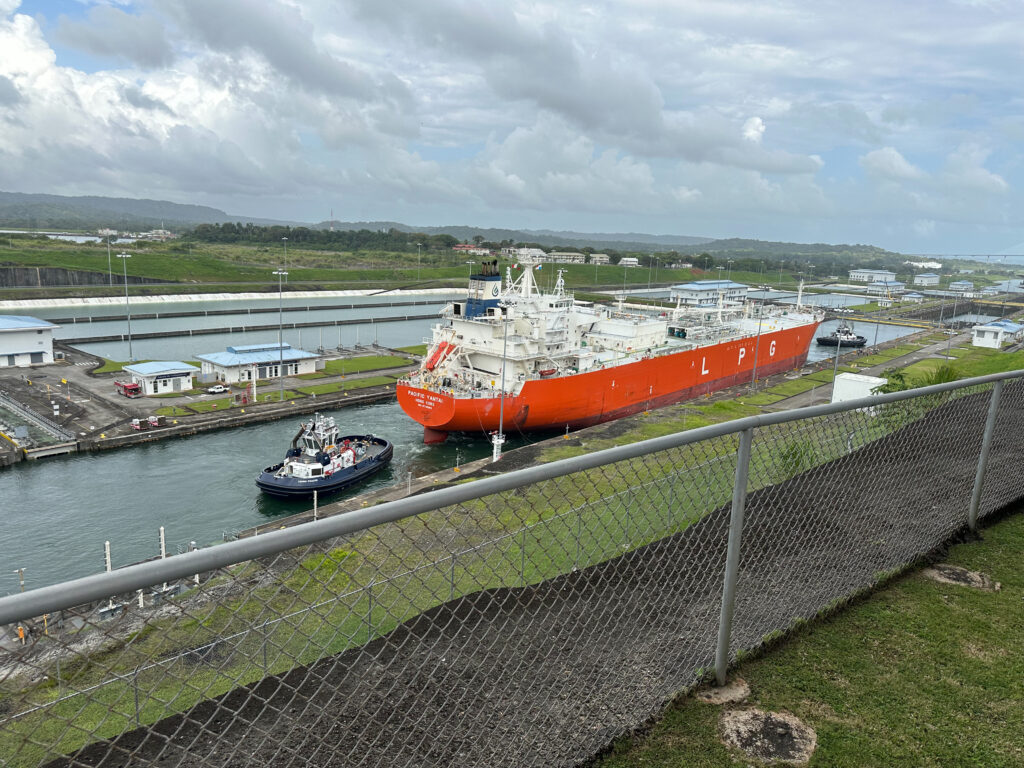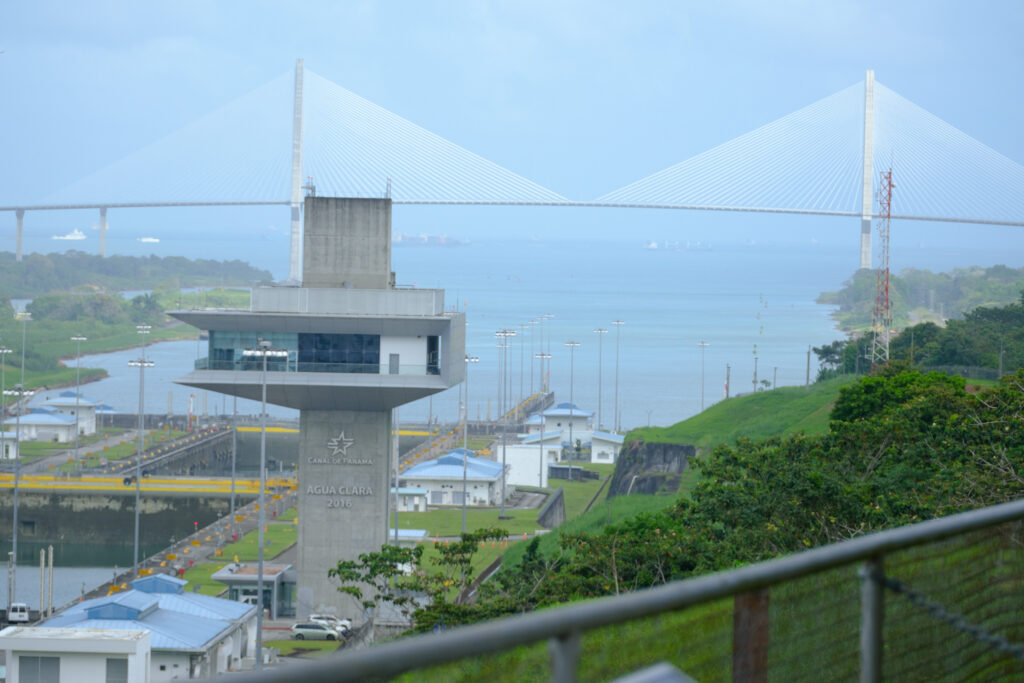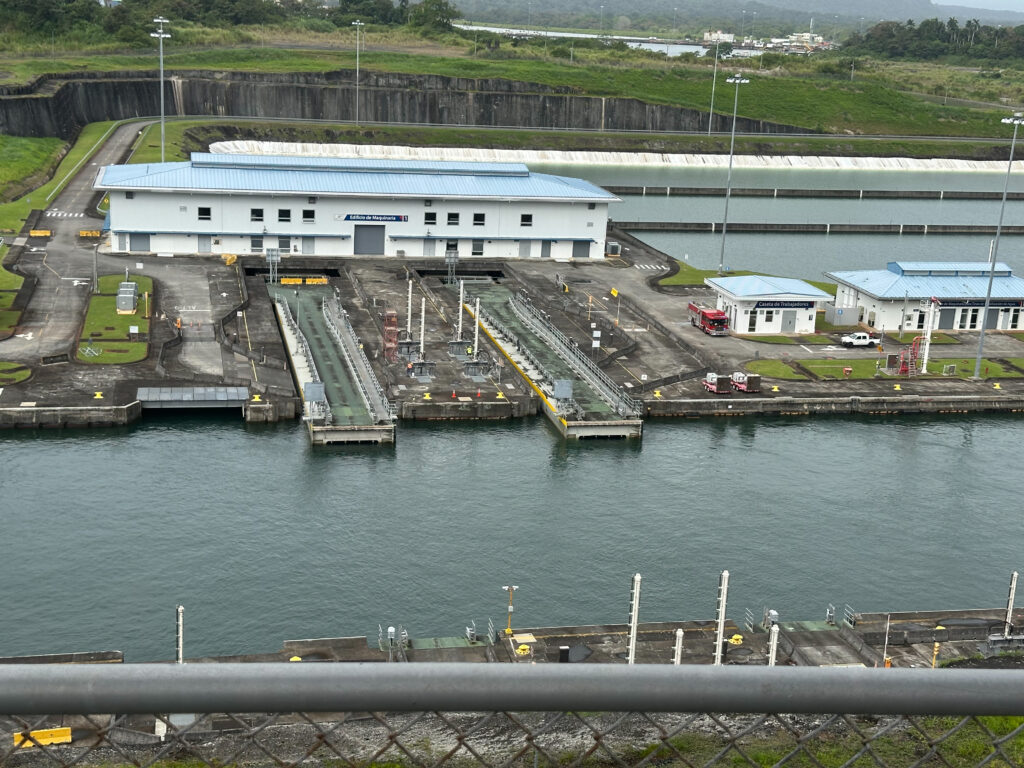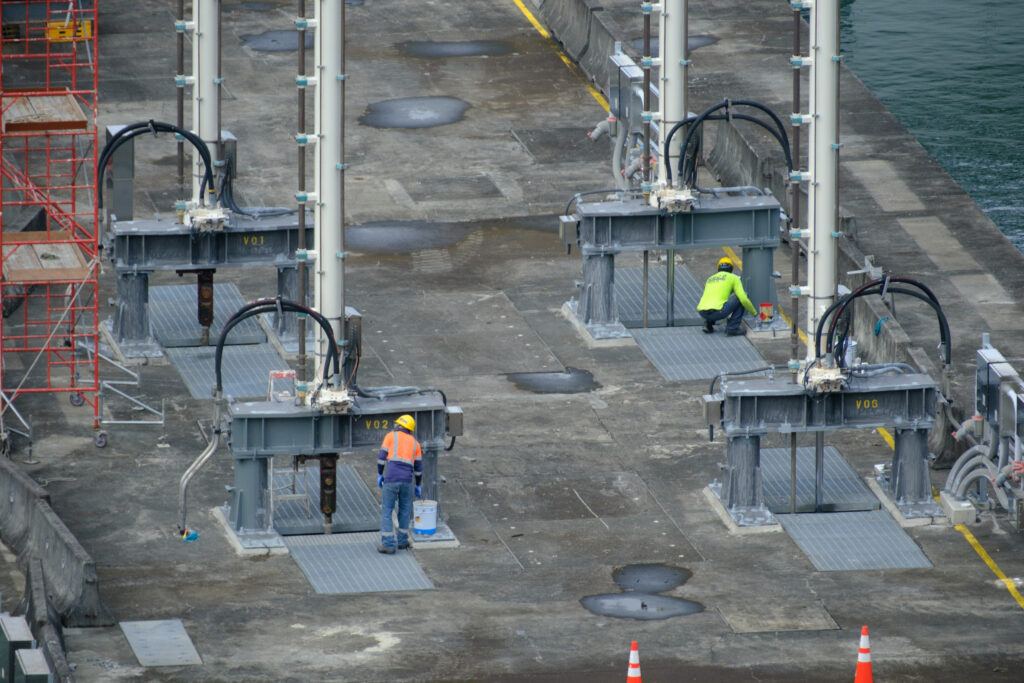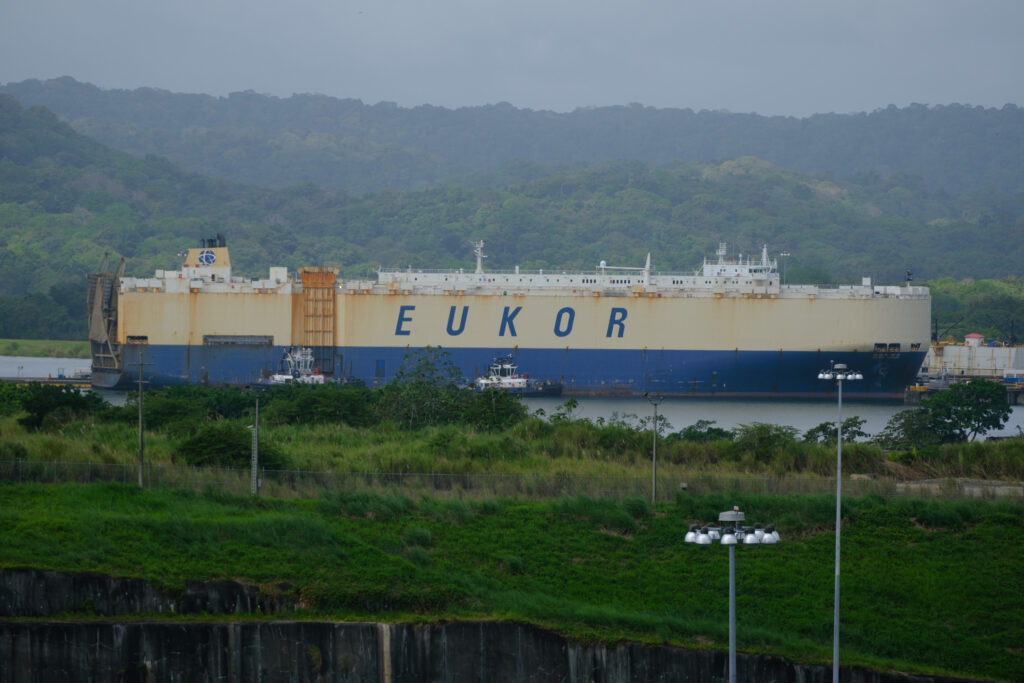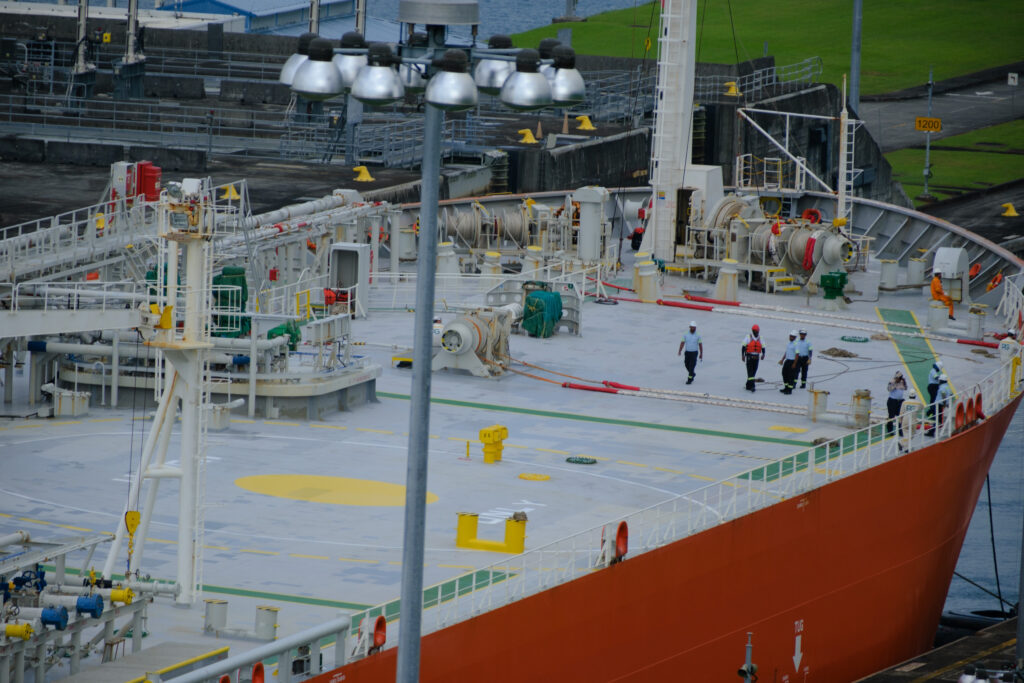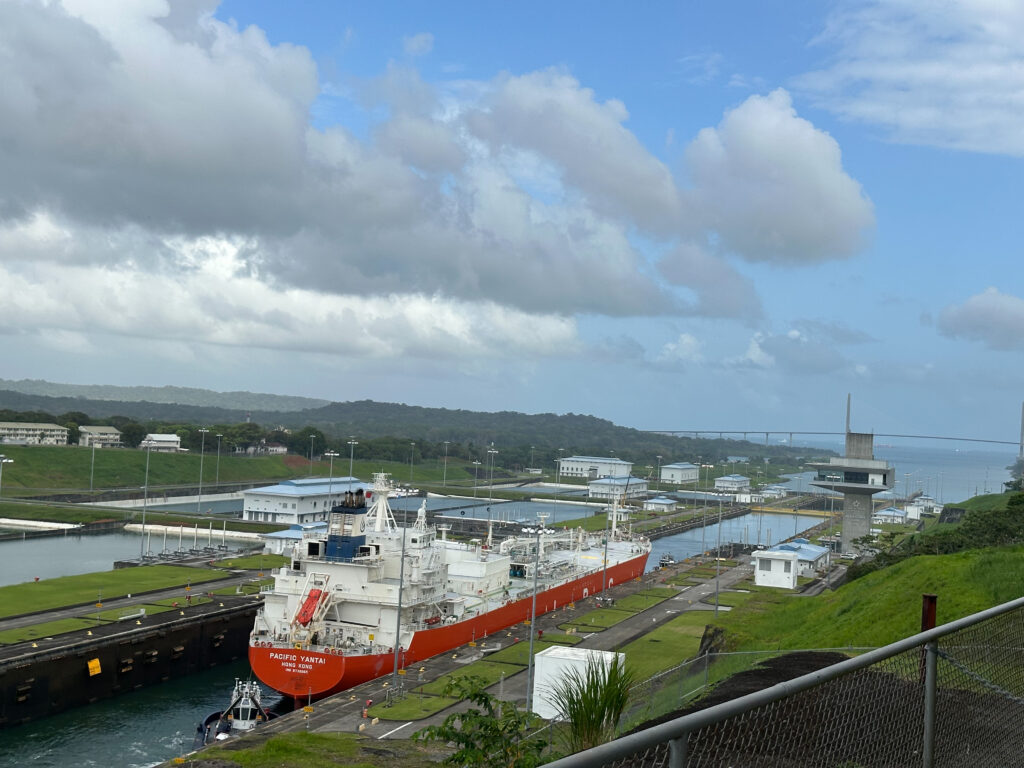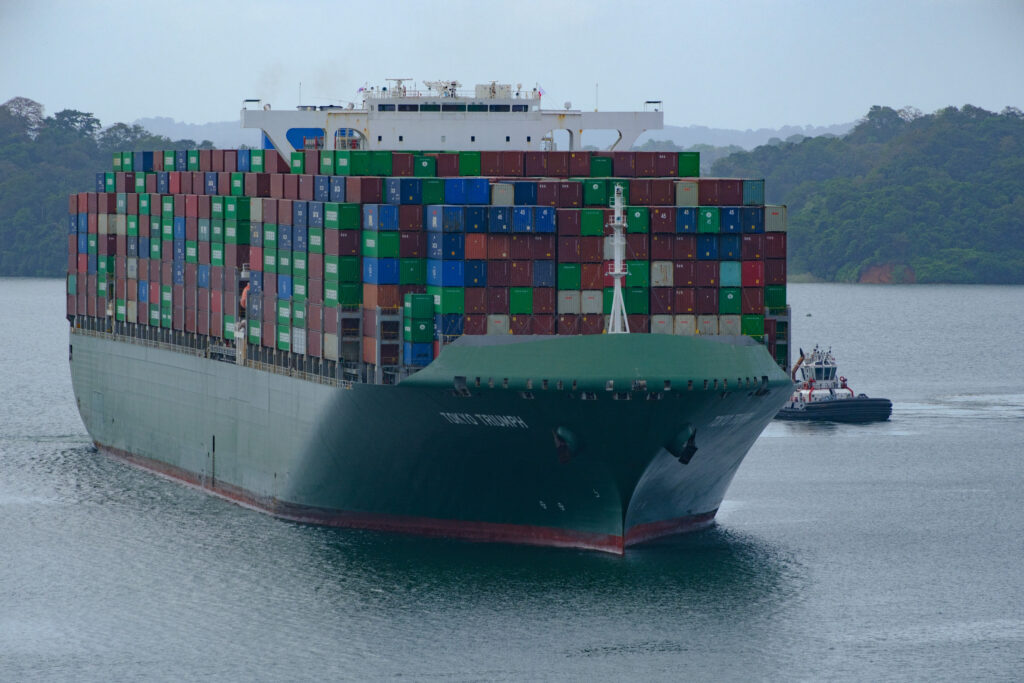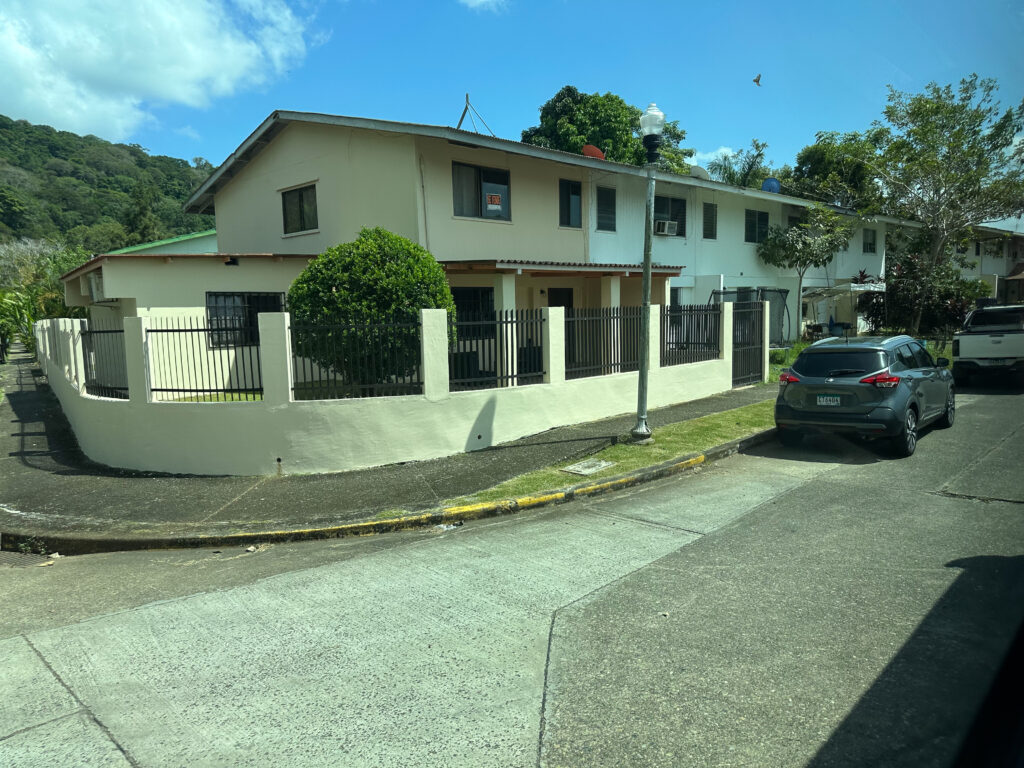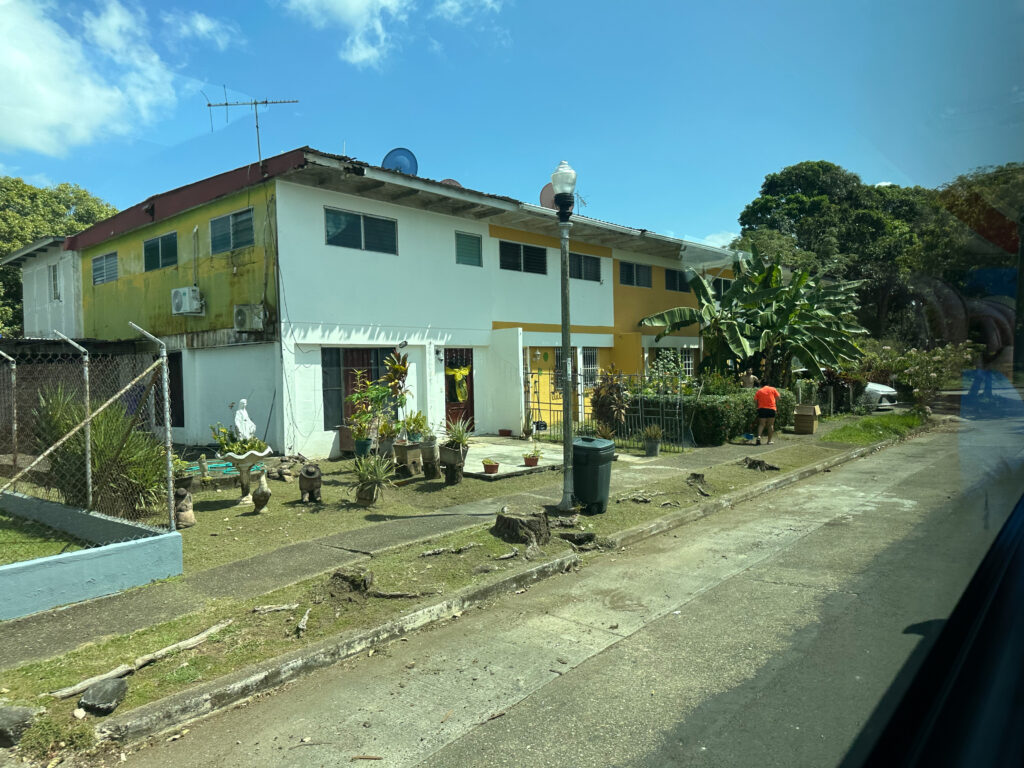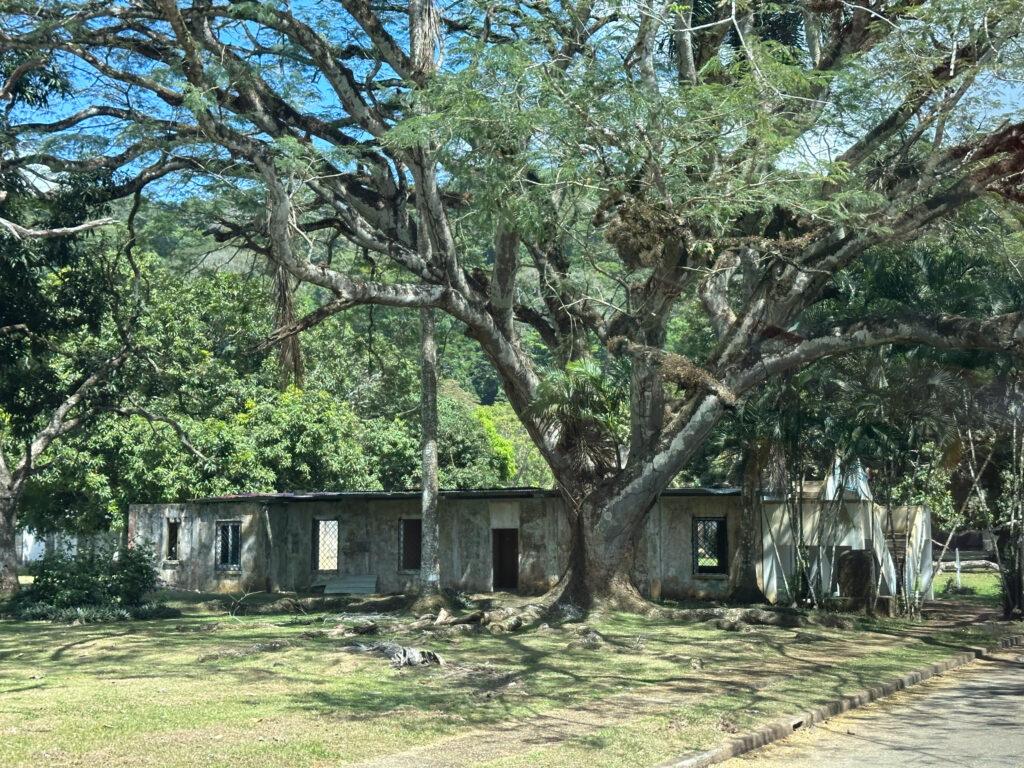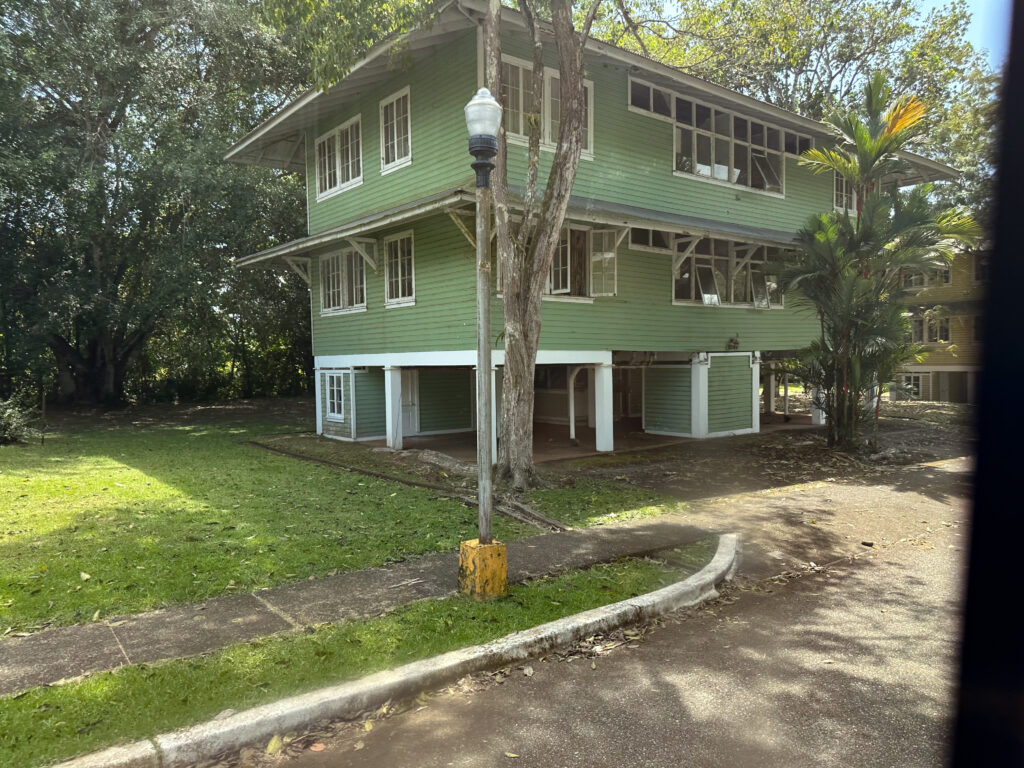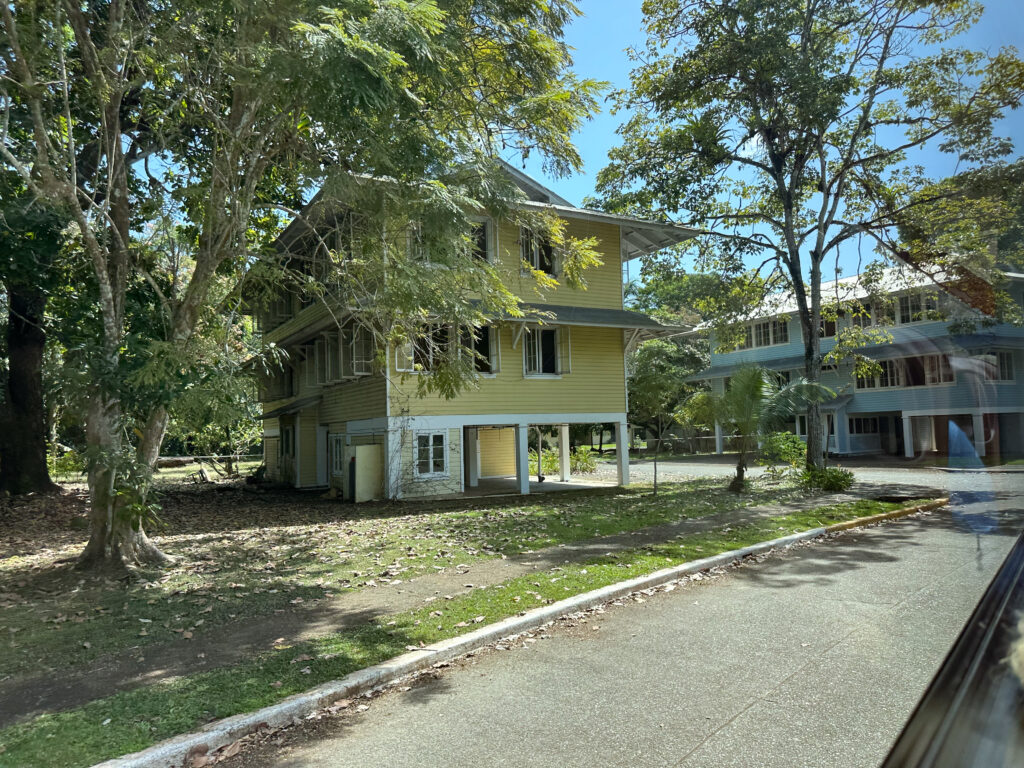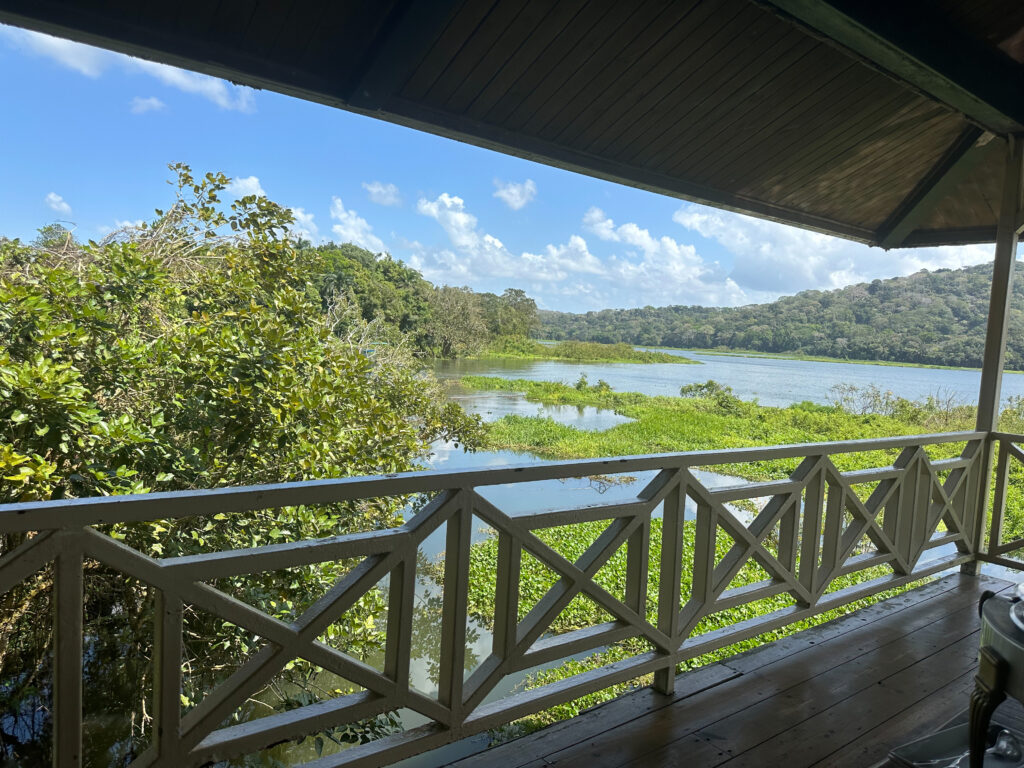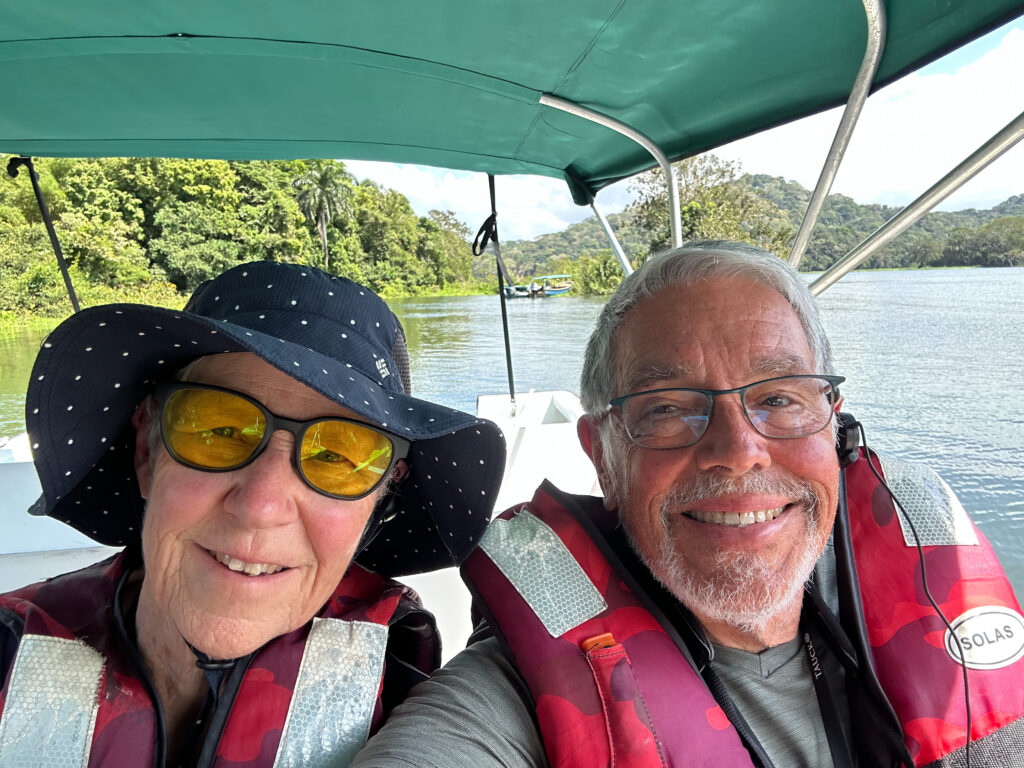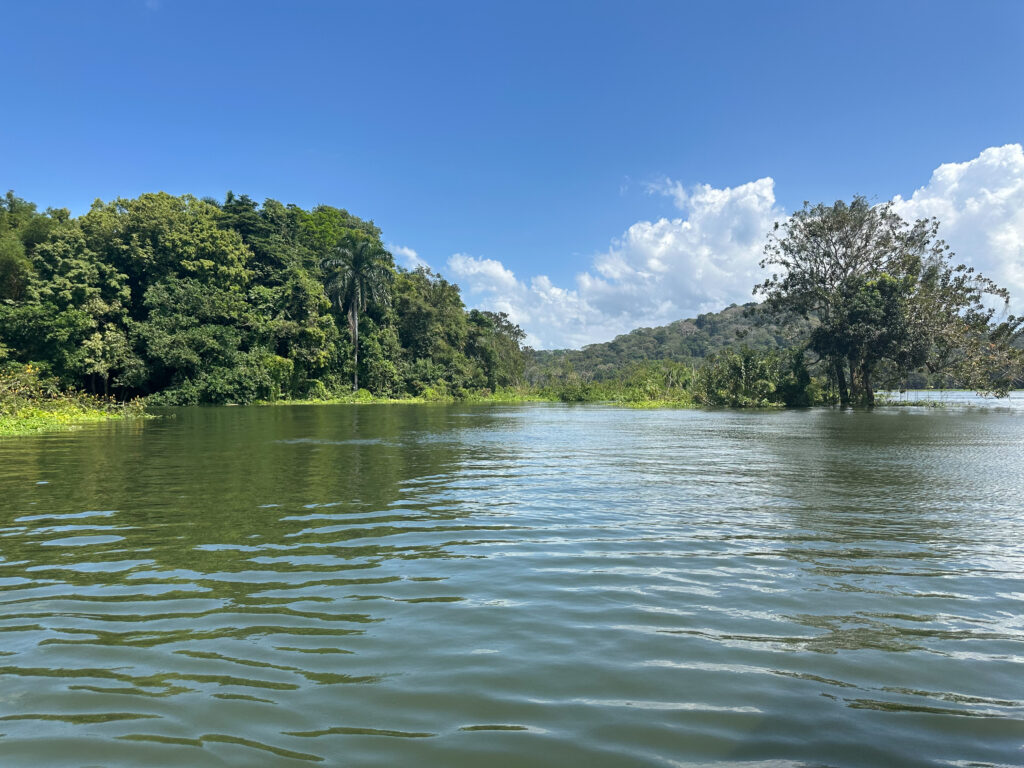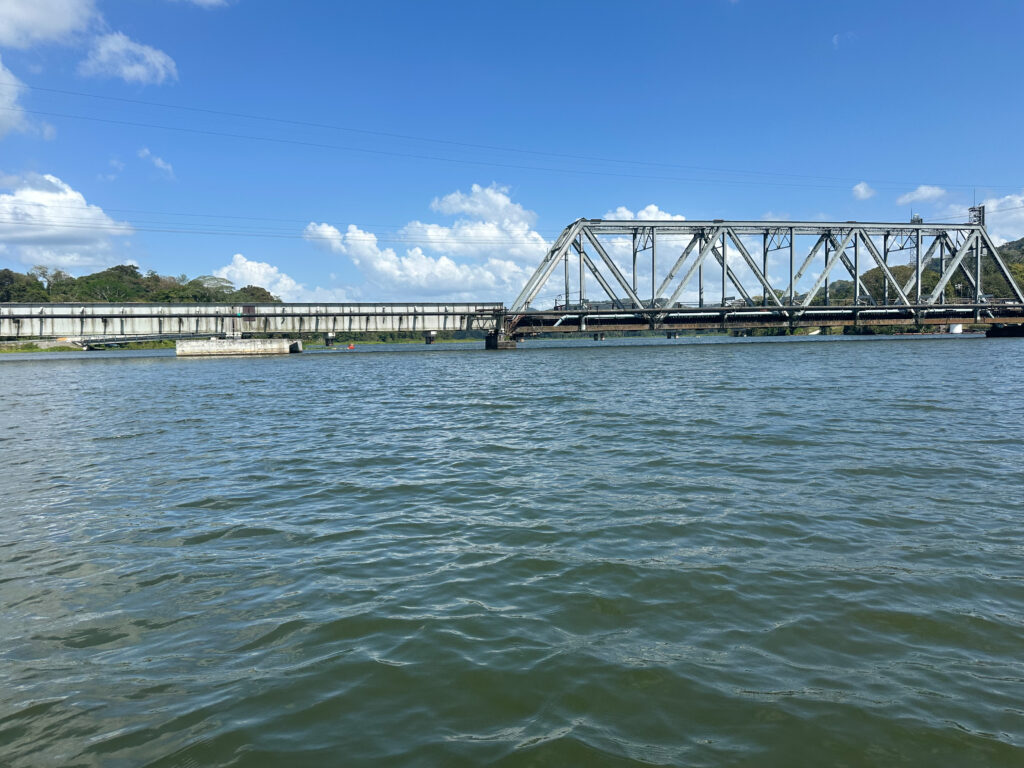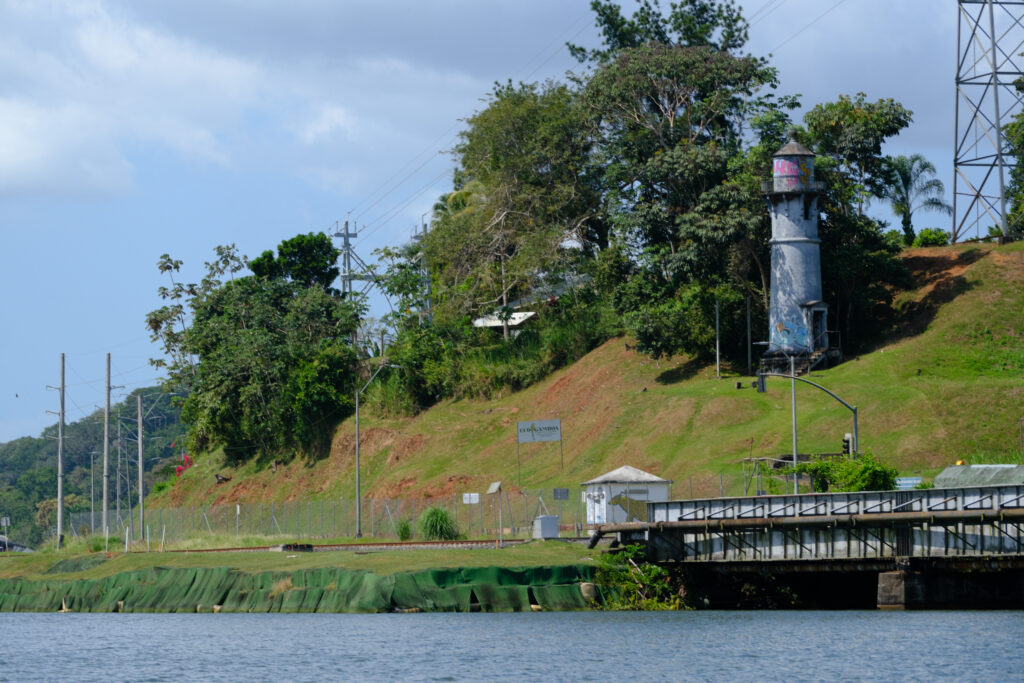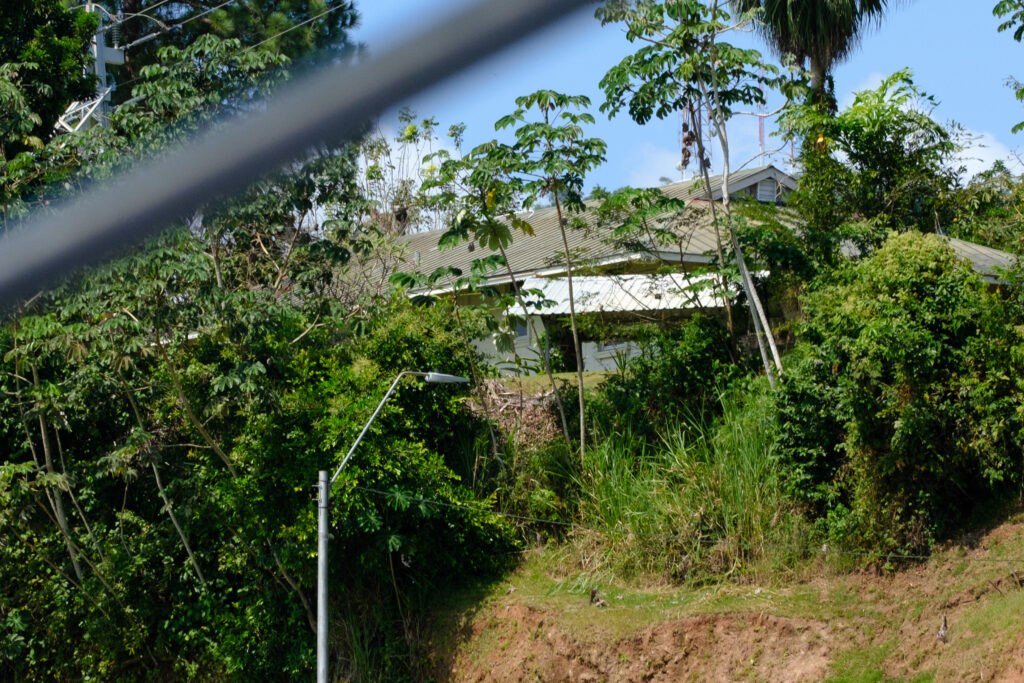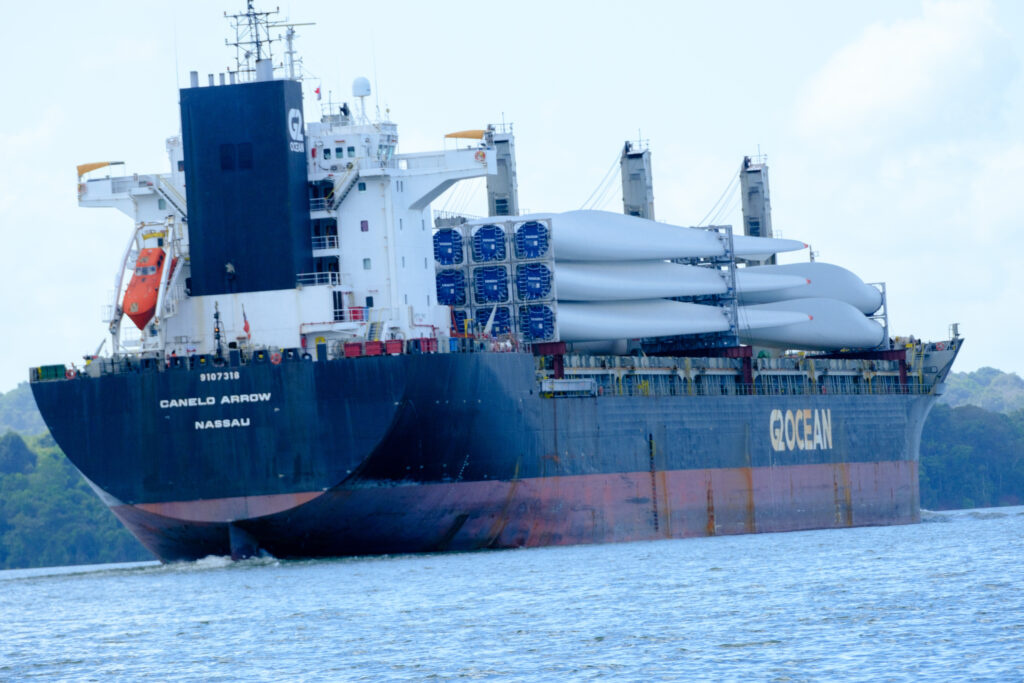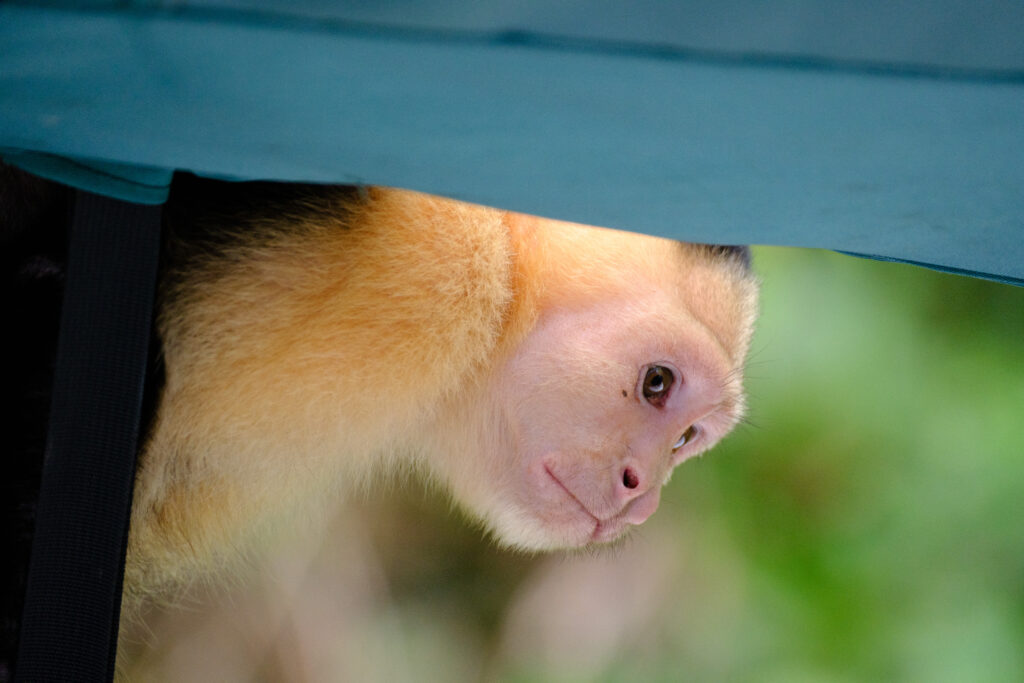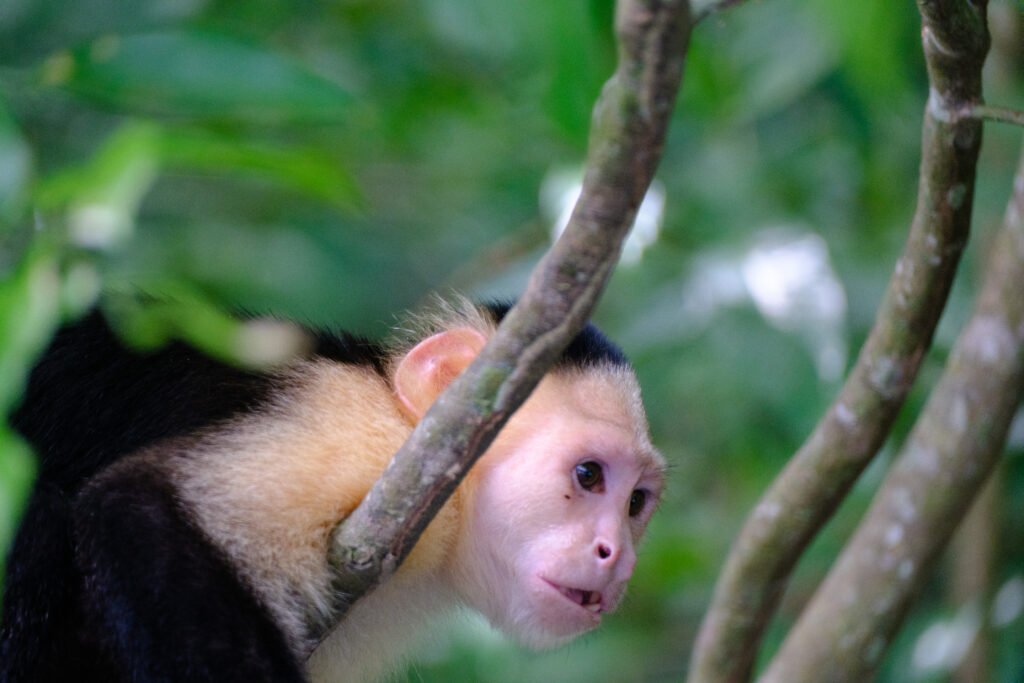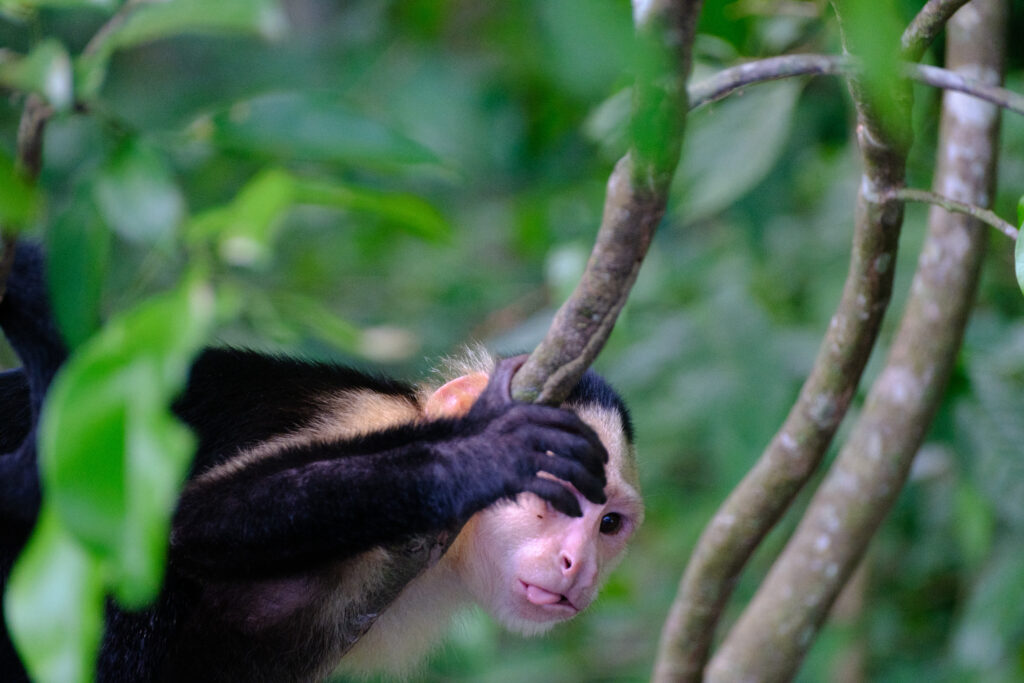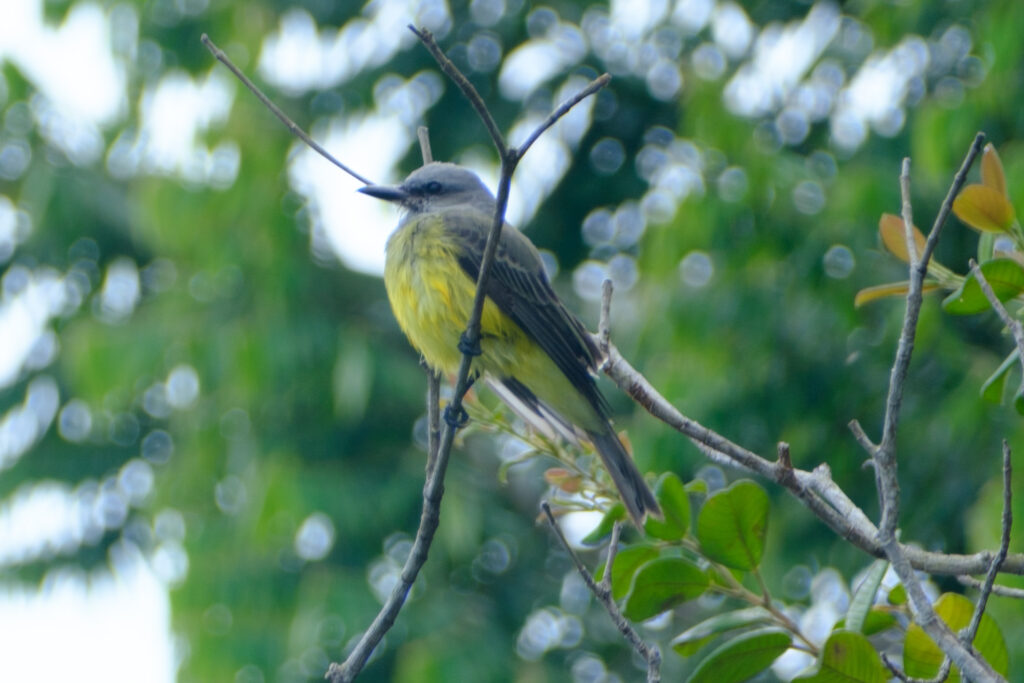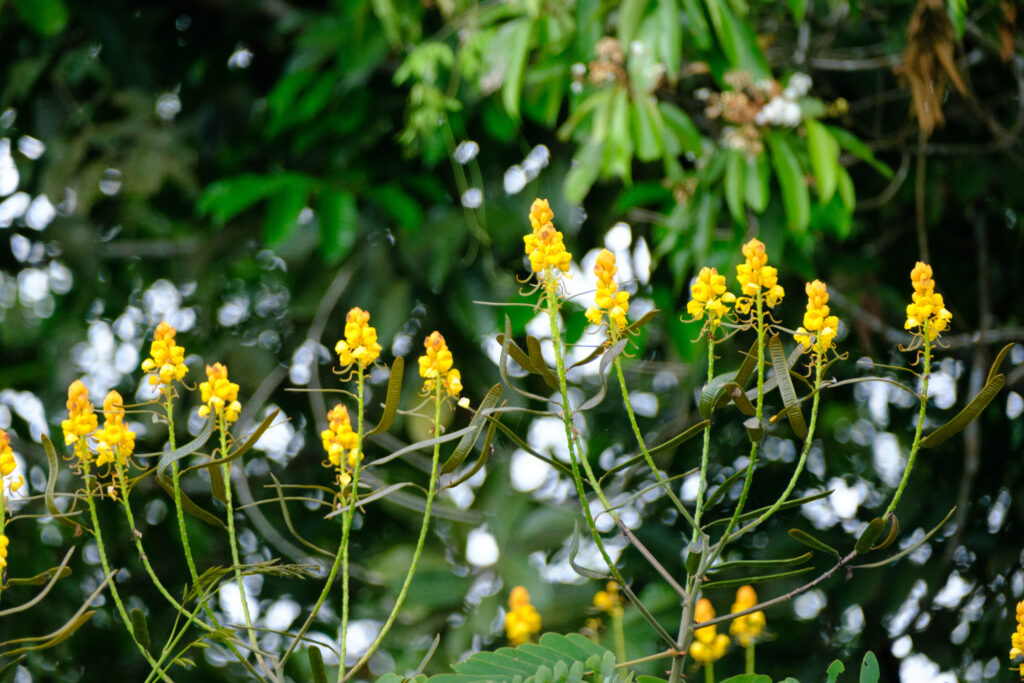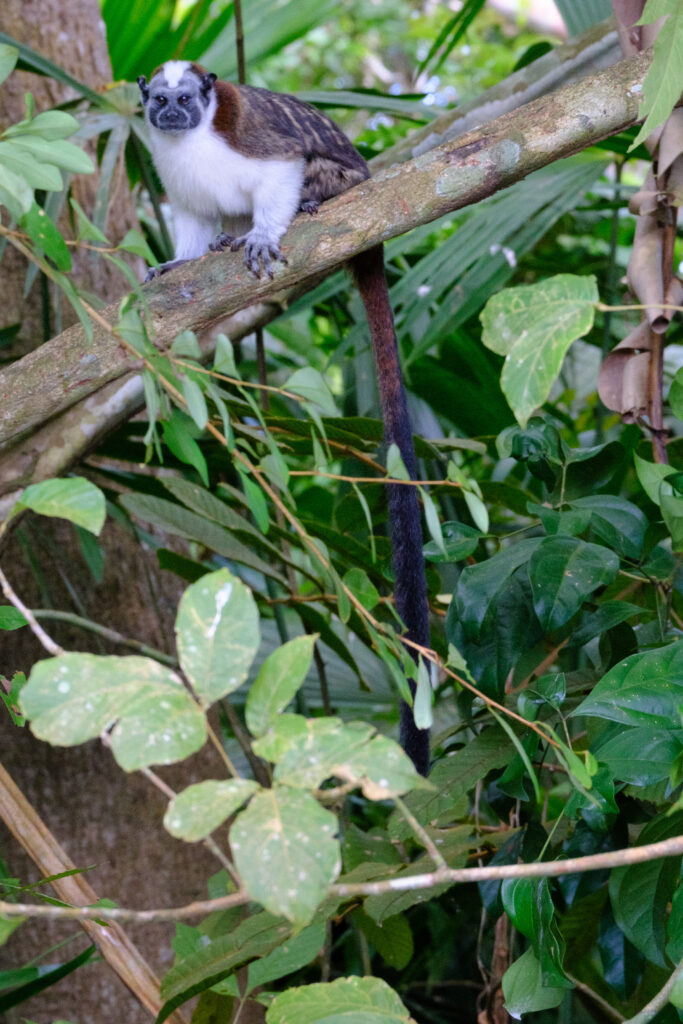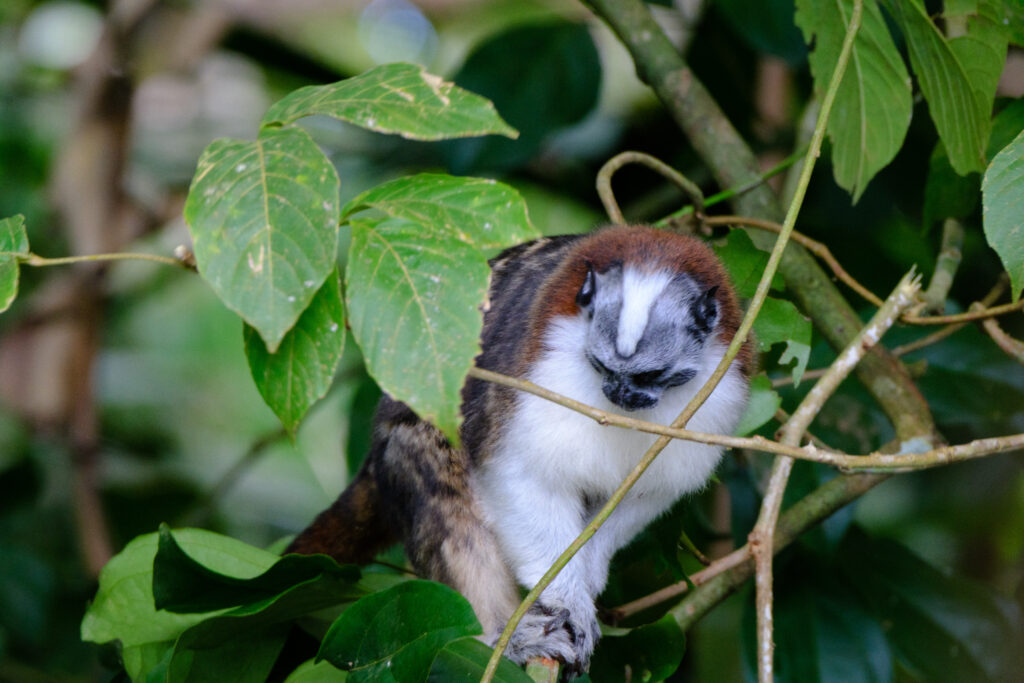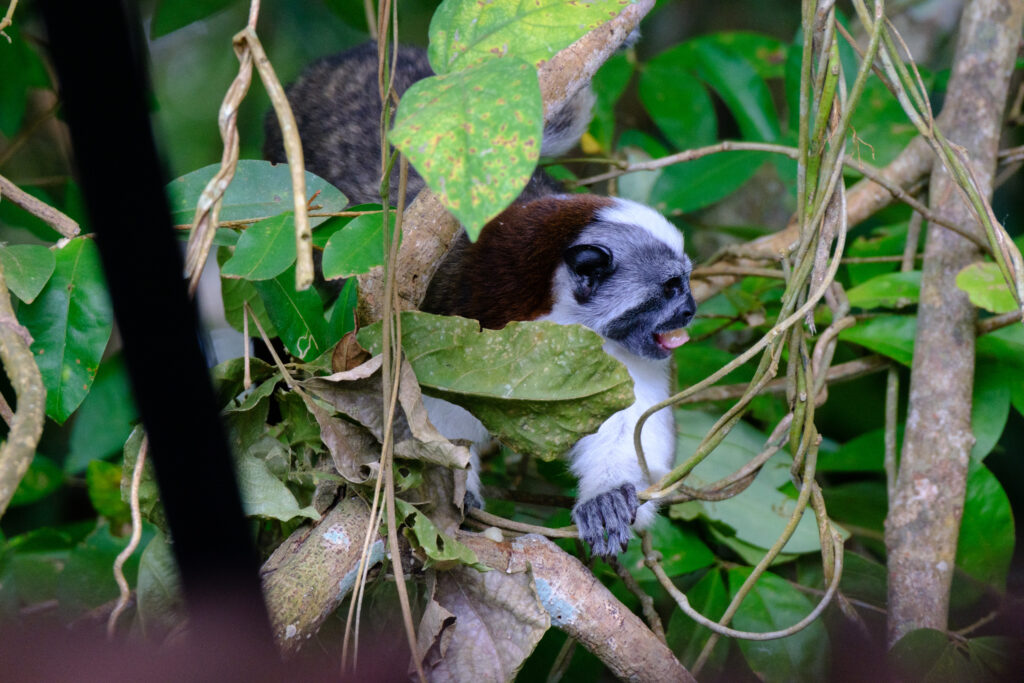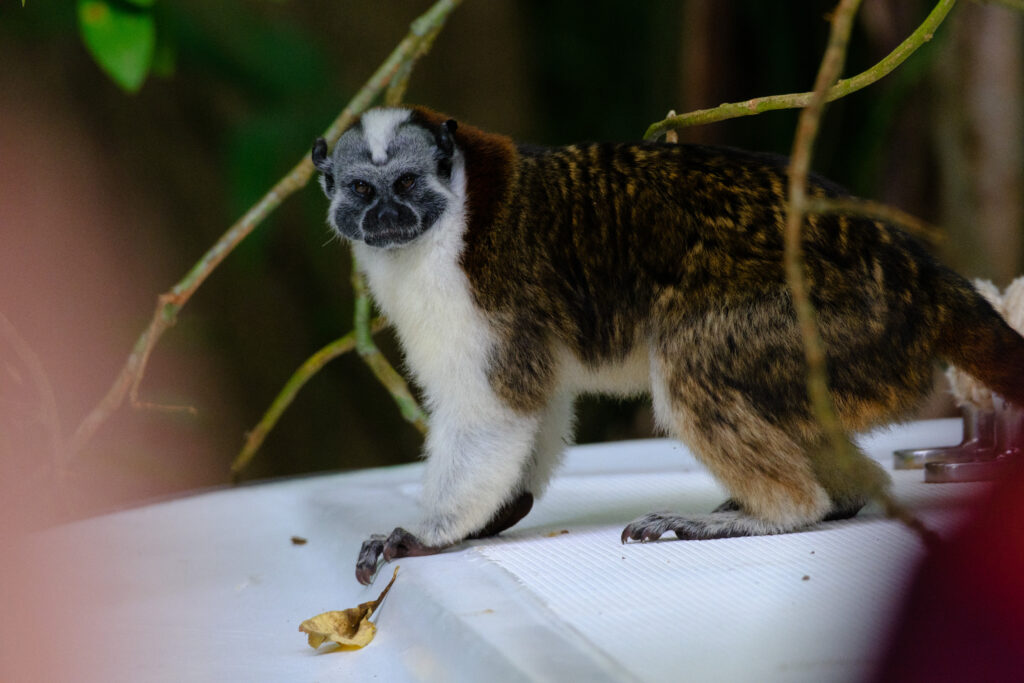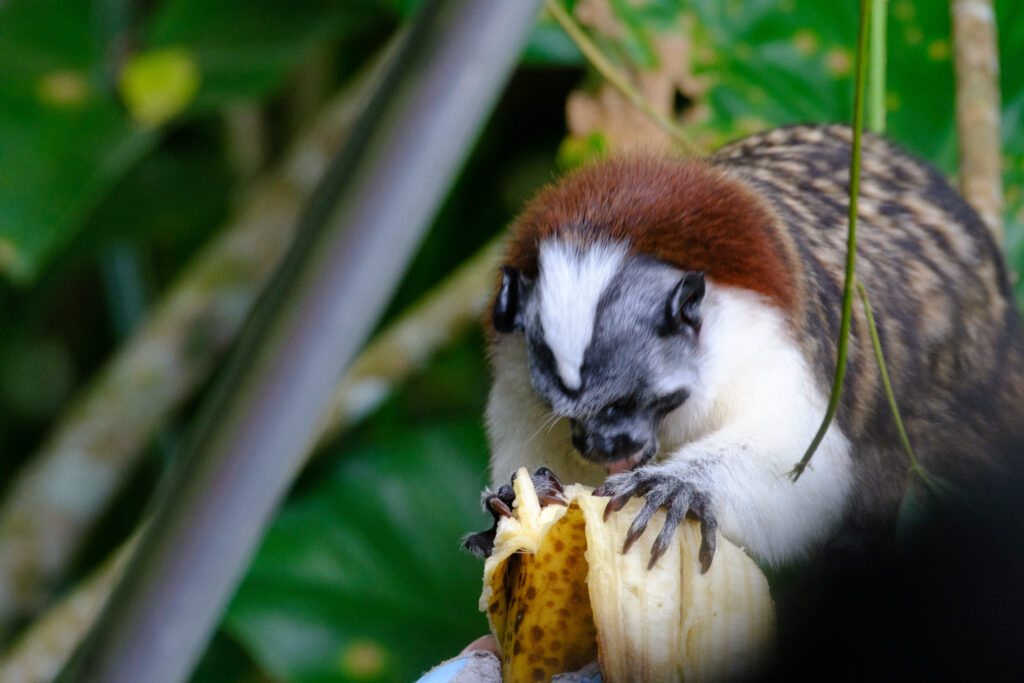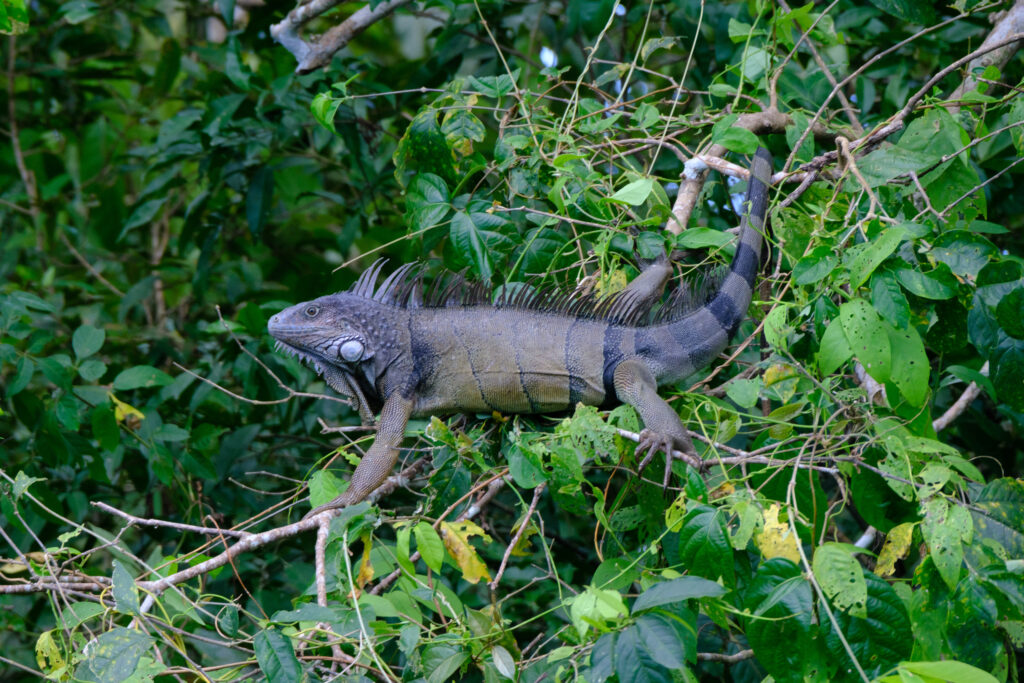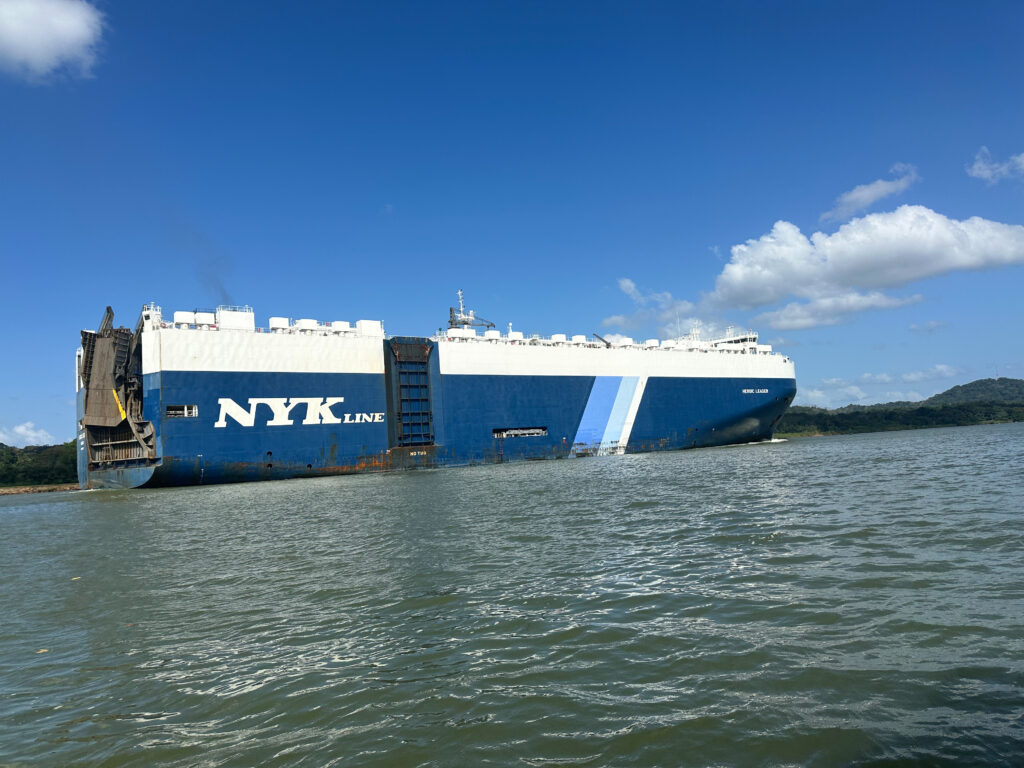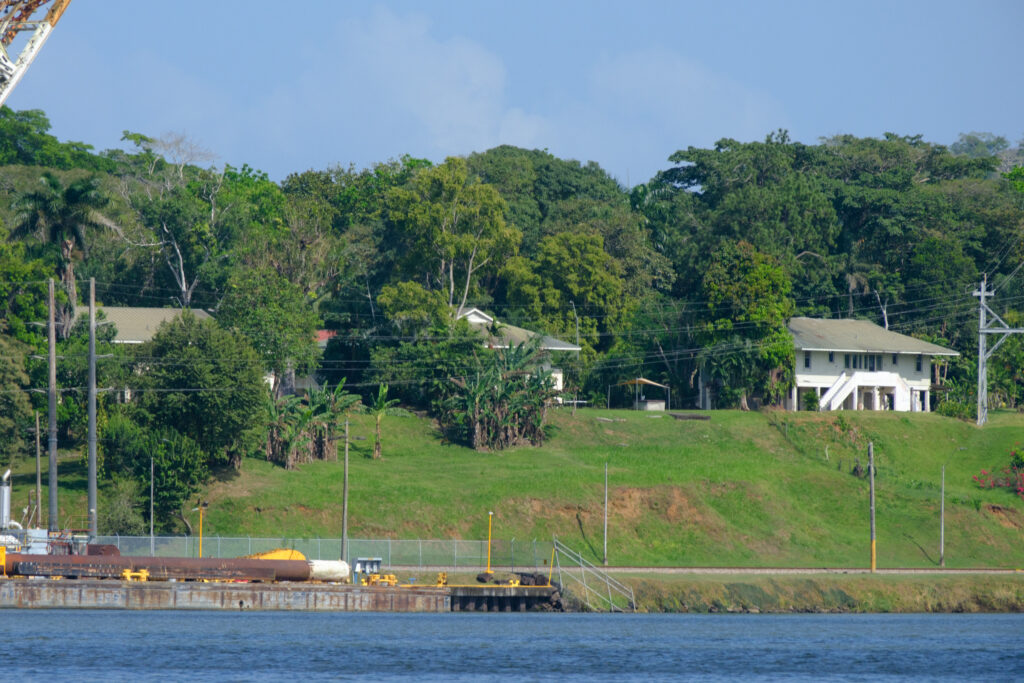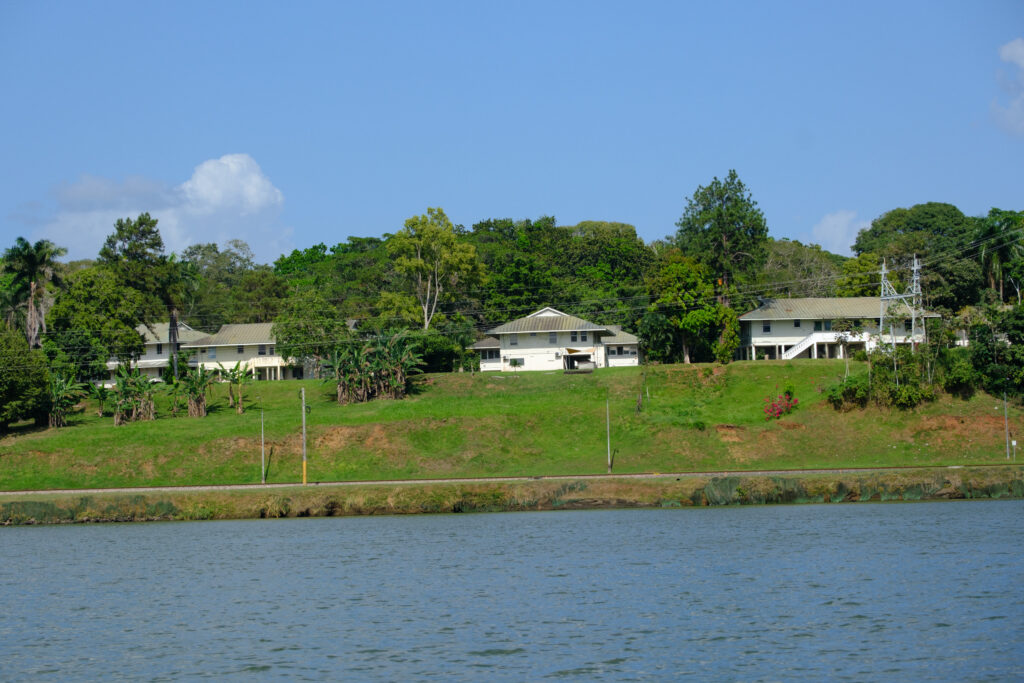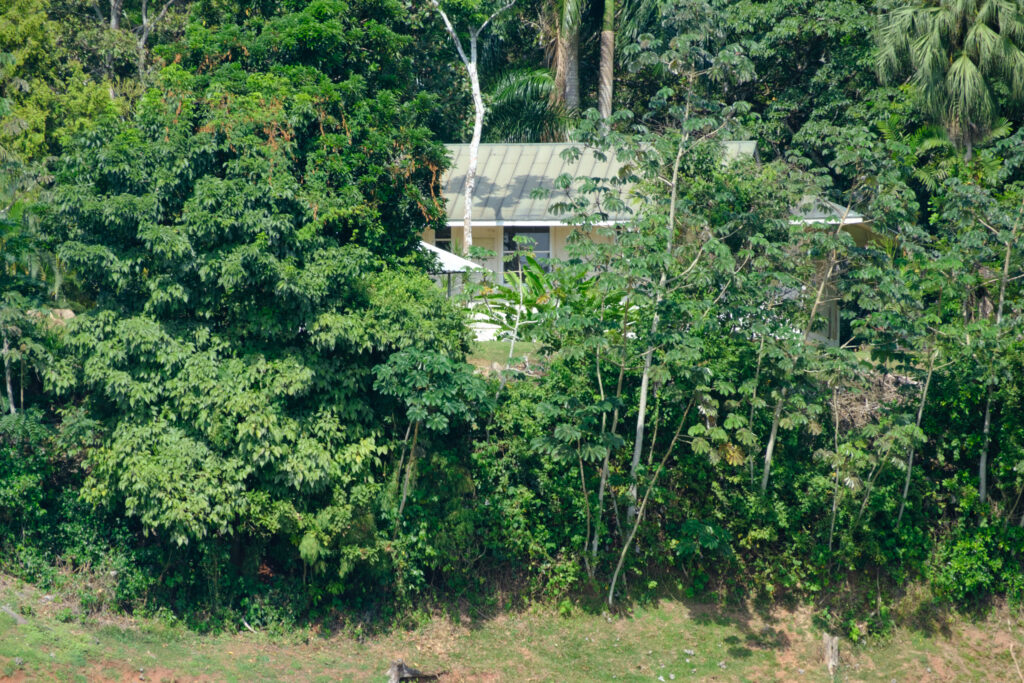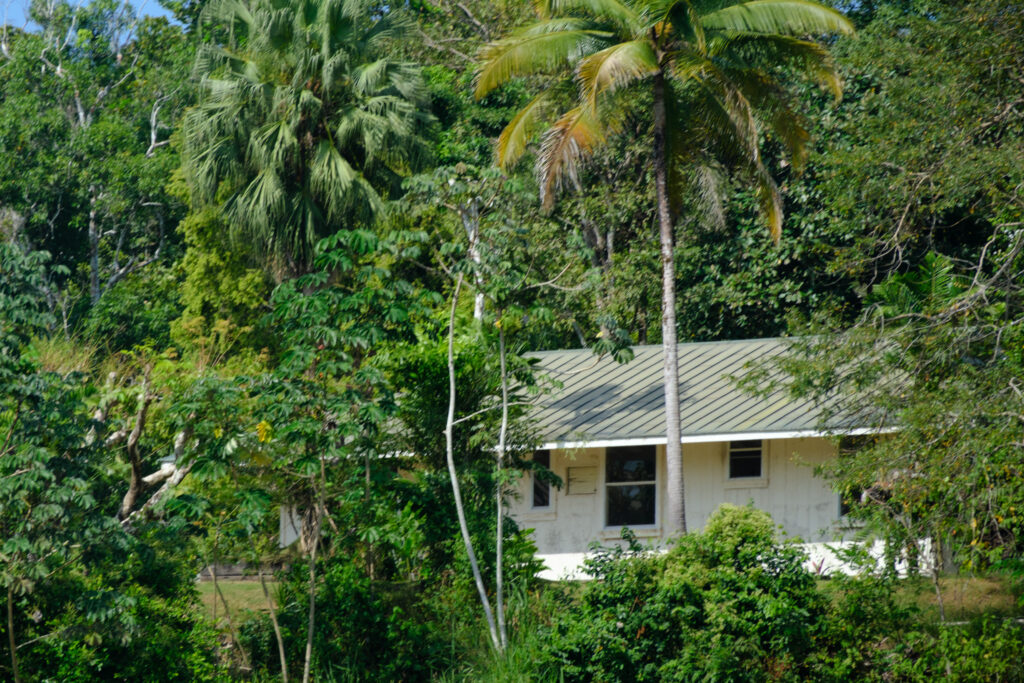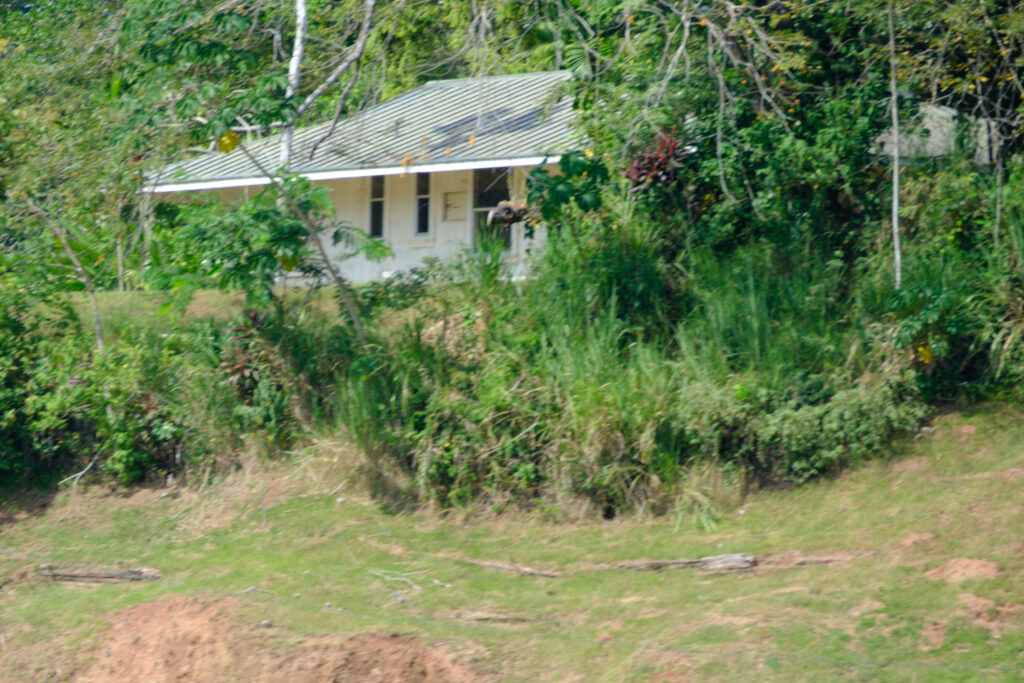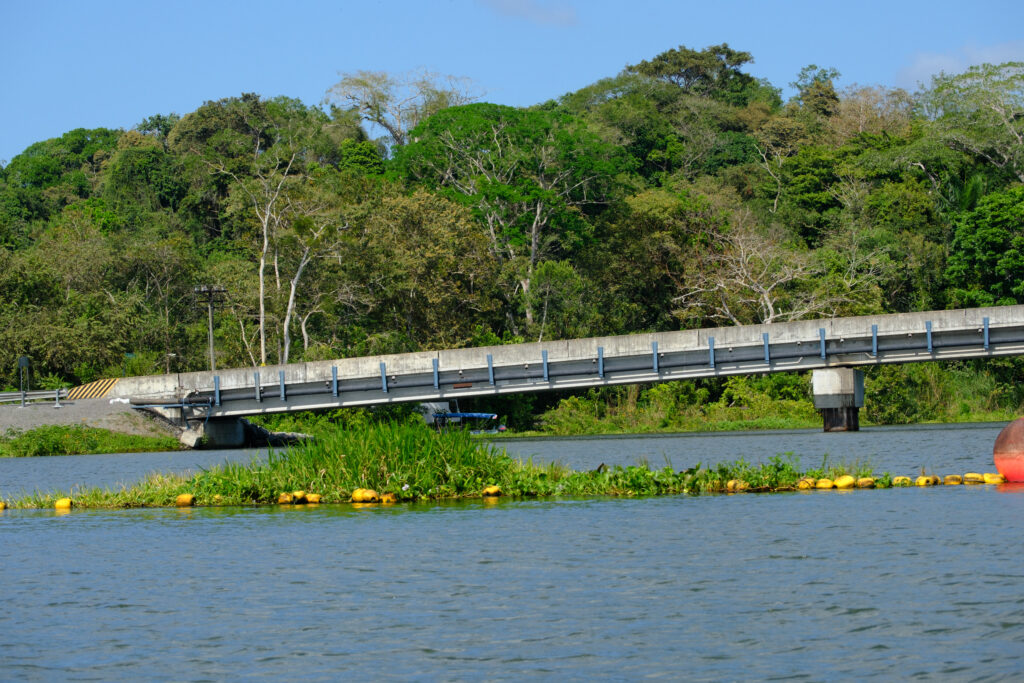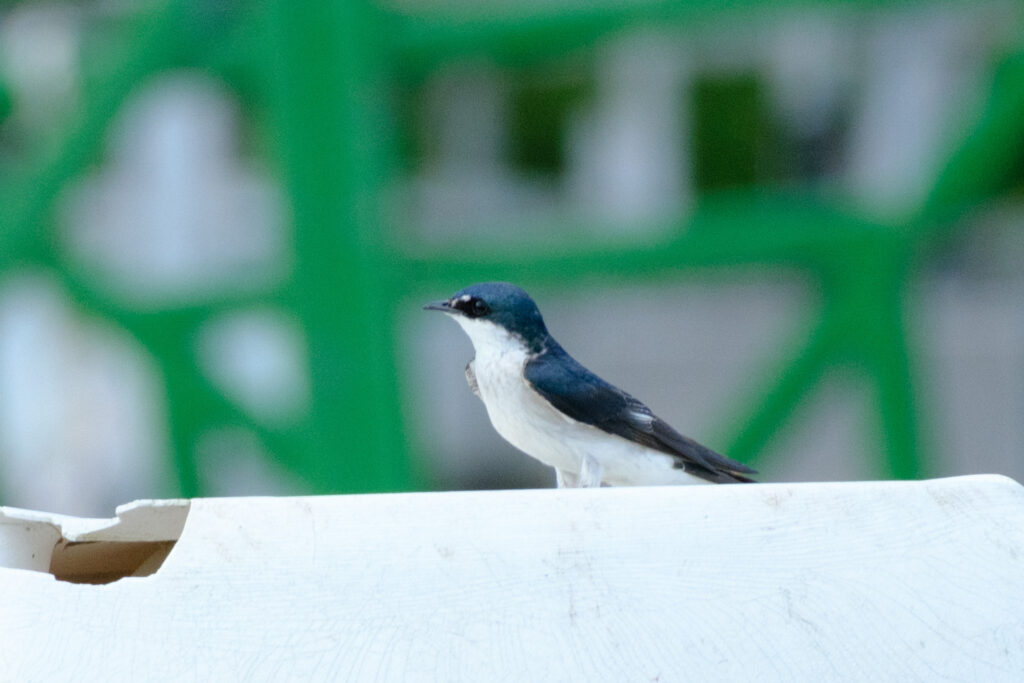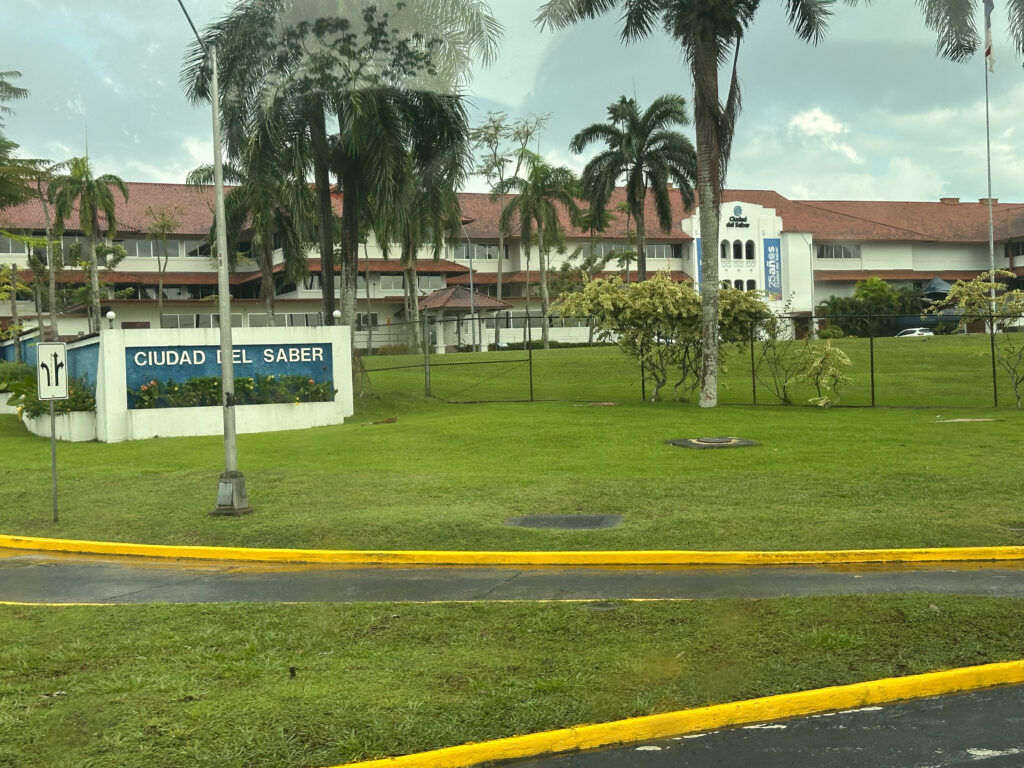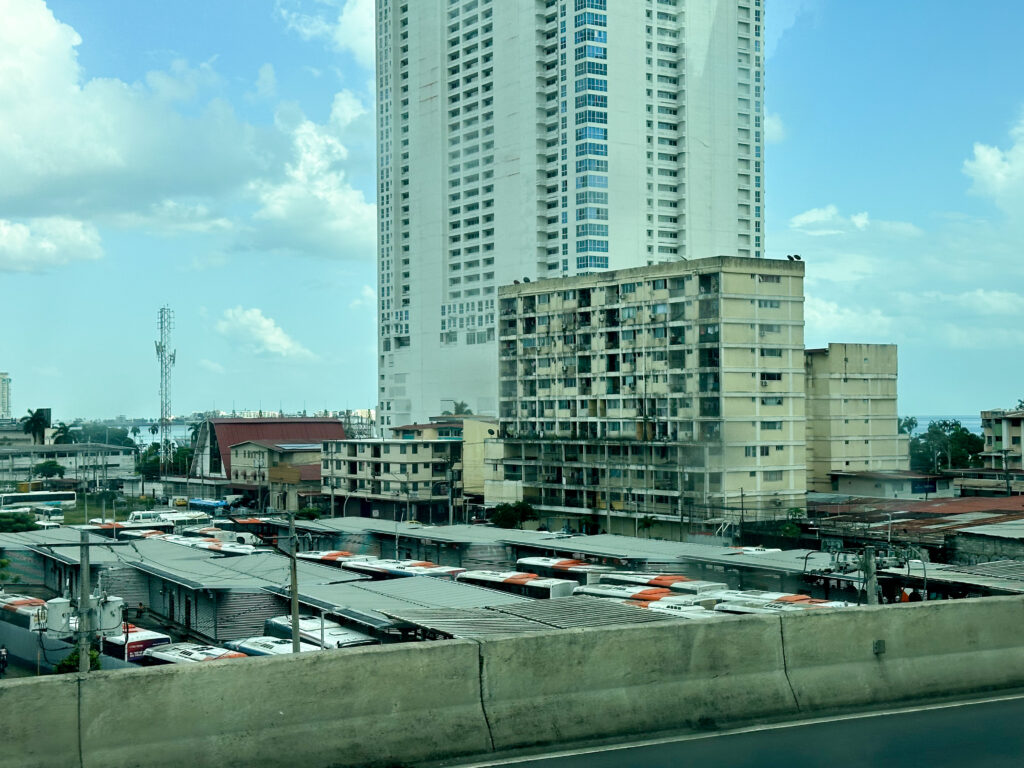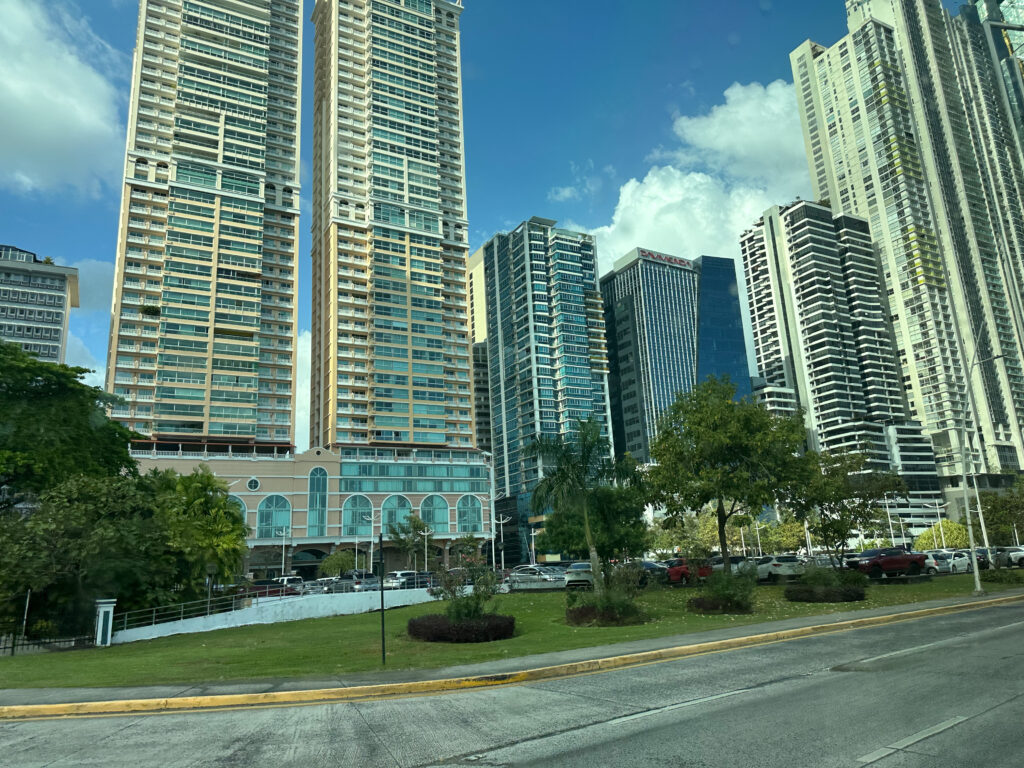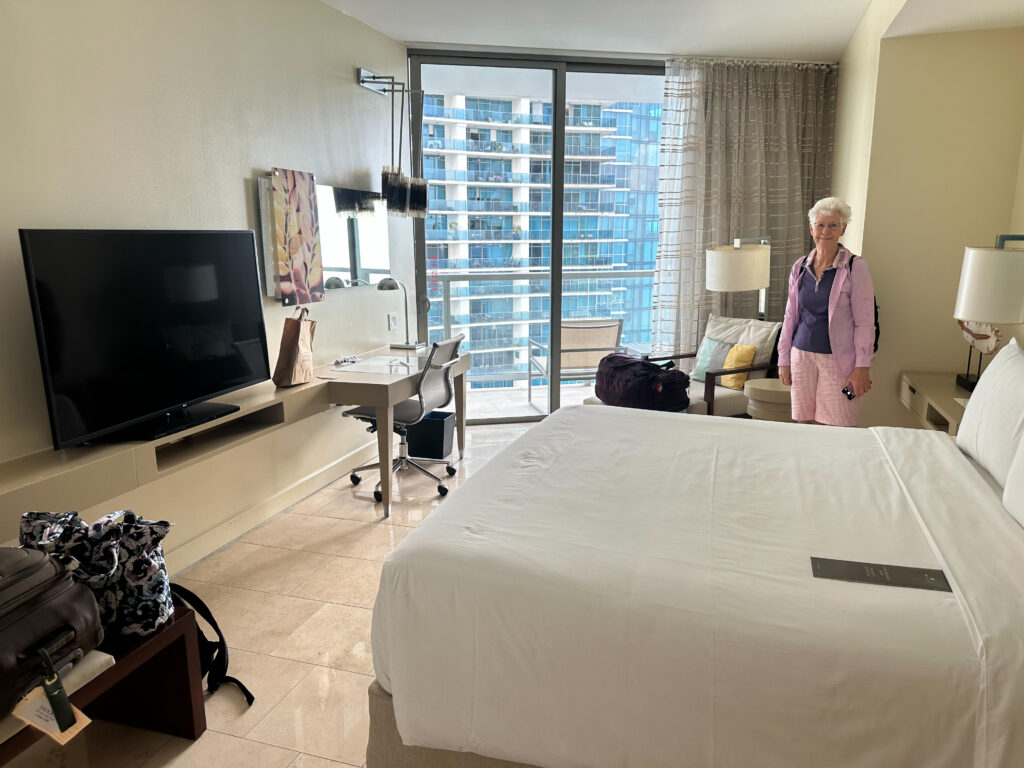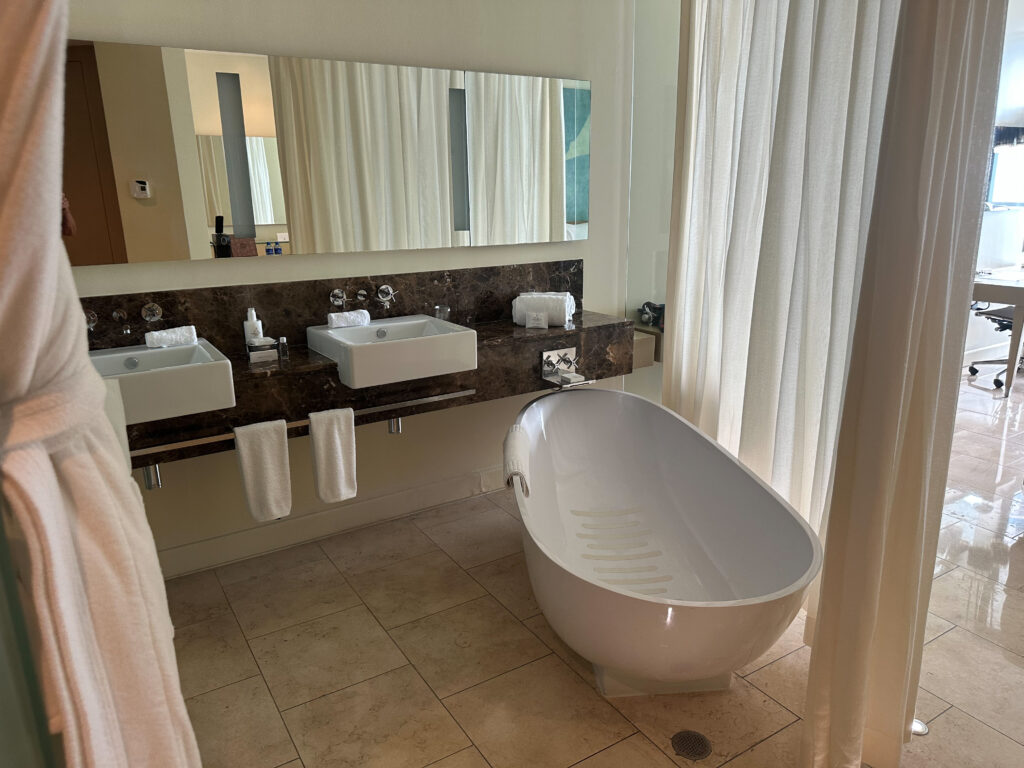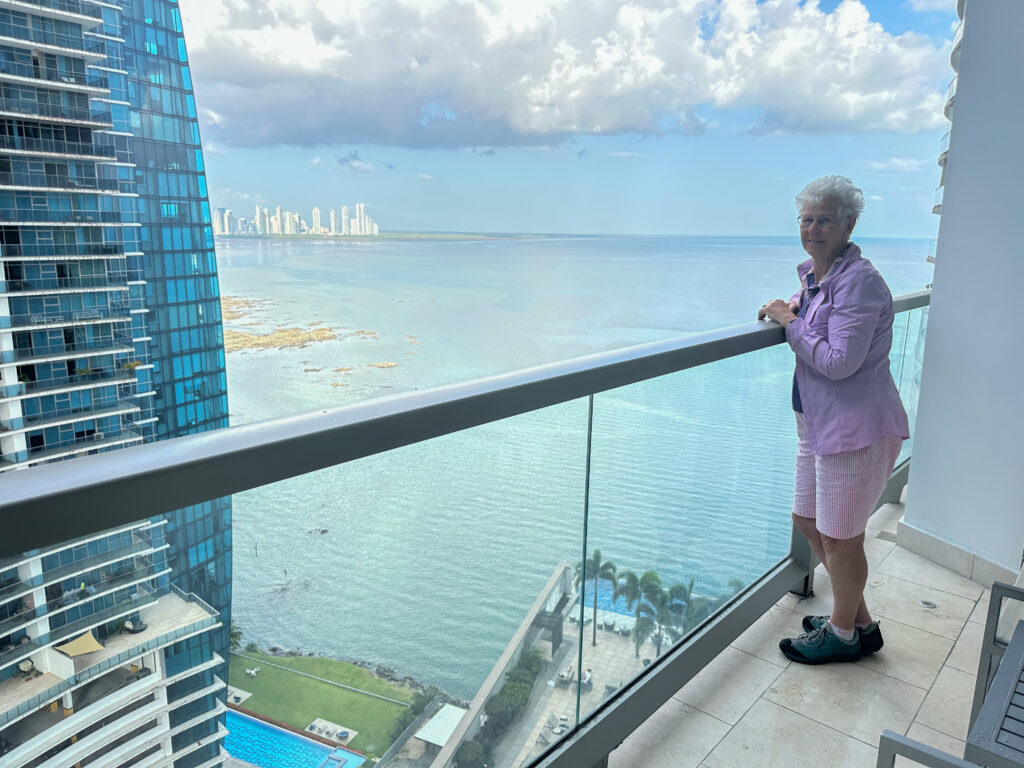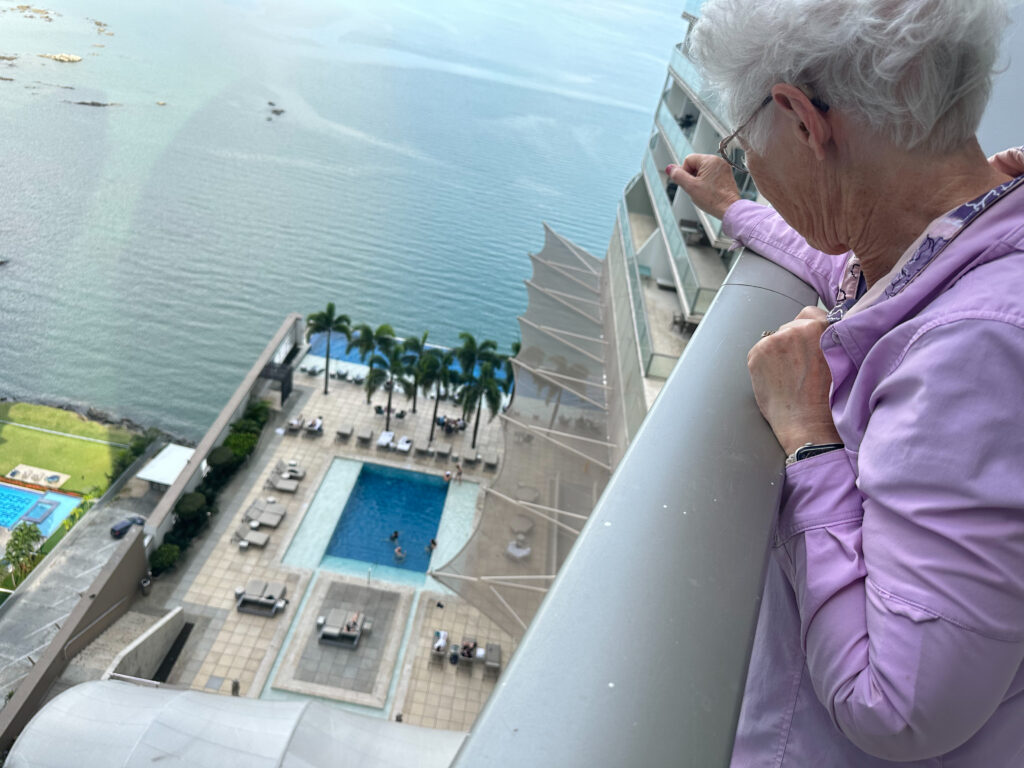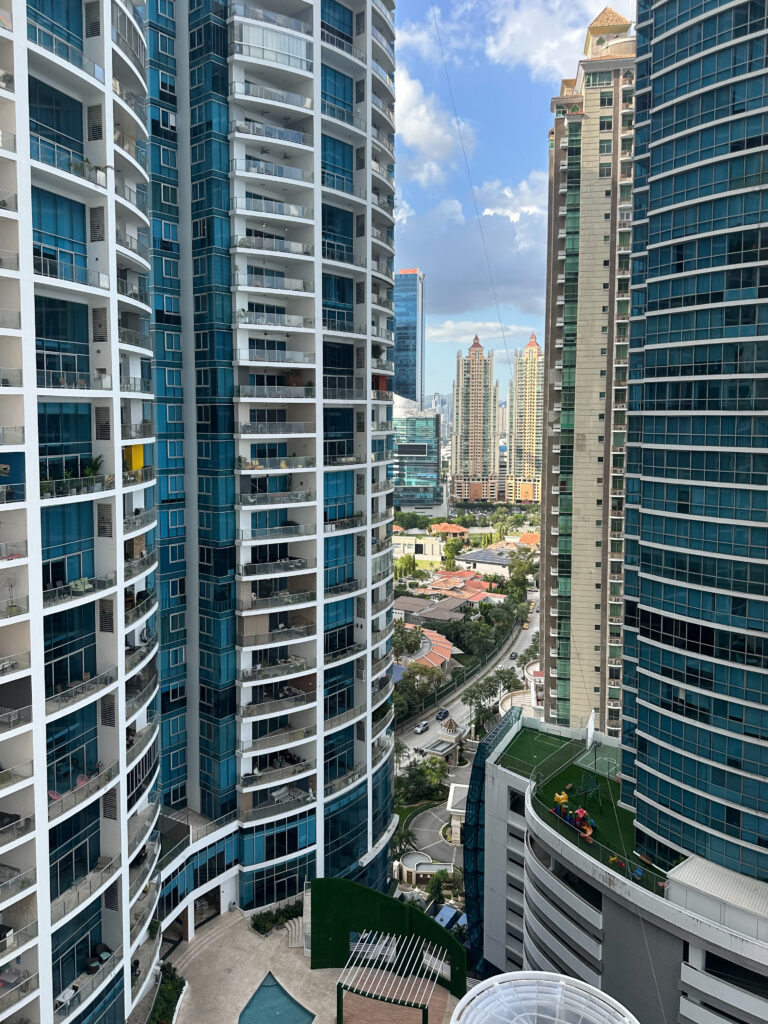Today we left the Le Bellot and set off by bus across the isthmus with a lunch and touring stop in Gamboa.
True confession: the local guide on our coach put me to sleep – not after a heavy lunch but at 10 AM. Frankly, he prattled on about the history of Panama in excruciating detail. You know me; I like history. But half of it we’d already heard elsewhere and the other half was beyond my level of interest. I’m a big picture kind of guy, I guess. Furthermore, the scenery wasn’t particularly interesting – rain forest with no open views and few towns or houses.
Here’s my big picture, which may or may not correspond to reality:
· Before the Spanish, there were the indigenous people like the Emberás and Kunas that we’ve visited this week.
· The Spanish settled first on the isthmus at a town called Nombre de Dios in 1510 or thereabouts, making it the first settlement on continental America (the Dominican Republic doesn’t count as continental). They pretty much wiped out and assimilated the indigenous people, only a few of whom remain.
· The big breakthrough was the first continental railroad, constructed in the 1850s to haul 49ers to the California gold fields. Rail transportation is still a big thing here. Cargo ships unload containers on one coast, they are shipped by rail across to the other and loaded on other ships to complete their journey. Beats paying big bucks to transit the canal and makes more efficient use of ships and crew.
· The canal, completed in 1914 was the revolutionary feat that put Panama on the map.
· I get mixed feelings from the few Panamanians we’ve run into. On the one hand, Panama was in a state of turmoil. Some claimed the treaty signed in 1903, at the time of independence from Columbia, was not valid. They wanted ownership. Nixon, Ford and ultimately Carter worked the issue, resulting in the handover completed in 1979. On the other hand, Panamanians lost significant income with the pullout of Americans, especially the U.S. military.
· Panama completed construction of the new wider canal to handle “Panamax” ships, thereby increasing the volume, and hence revenues, produced by the canal. However, we’re told that Panamanian citizens are upset that little of the revenues trickle down to the average citizen. Corruption?
The first stop was the Agua Clara locks – the new ones – that in addition to being wider also conserve water, a scarce resource in the dry season, by using 60% of one lock’s water to fill the next one in sequence. The lock doors are different. Doors come directly across the lock rather than swinging in and out. And rather than using motorized tractors to maintain the ship’s position in the lock as is done in the old locks, tug boats are used in the new locks.
Our stop in Gamboa was fun for two reasons, one of which was not the lunch, a decidedly bus tour affair, the kind you fear when you’re touring with a low-cost company. But, Gamboa is the town where Bill and Elaine lived and we had a chance to see what we believe was their home. And, we took a boat ride on the canal to see monkeys, White Faced Capuchin and Tamarin monkeys. The Tamarin is the smallest monkey in Panama, has a tail as long as its body and is unique in that the female is the dominant partner. We heard in the distance, but did not see, Howler monkeys. There was a nice armadillo sunning itself in the branches of a tree.
Panama City is a city of steel and glass skyscrapers nestled in with pretty low end tenement buildings. We will, I hope, learn more in our touring tomorrow, the last day of this trip before we leave for Colombia the day after tomorrow. The hotel is nice enough, a J W Marriott. Our friends payed $55 for two gin and tonics. We went across the street and had tacos at a food truck for $50 per couple, including two rounds of drinks.
